The new interior design trends we spotted at Salone del Mobile 2024
These are the interior design trends to look out for in 2024 and beyond, from soft upholstery to conversation pits and low dining
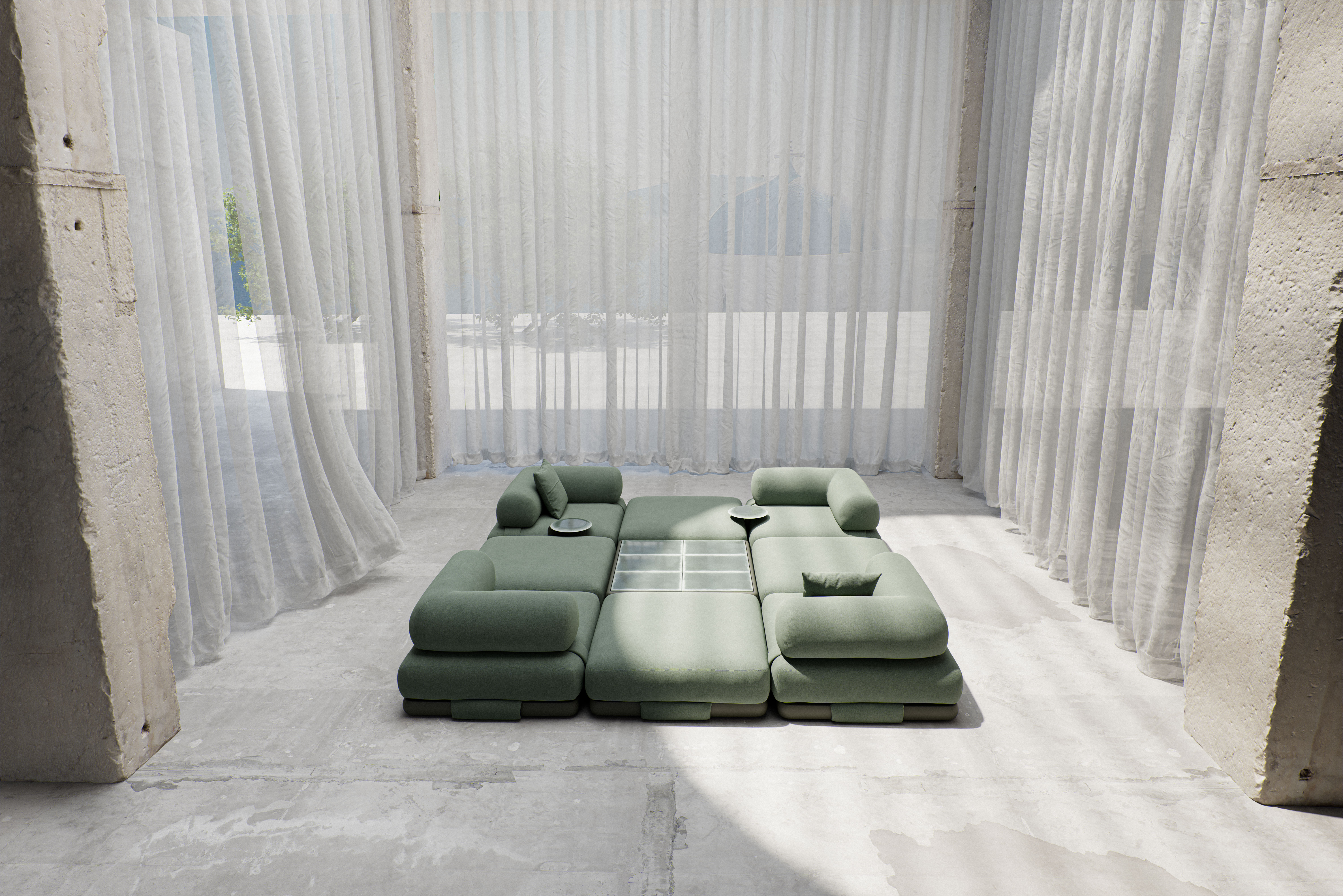
As we looked at interior design trends emerging from Salone del Mobile 2024, it was clear a few things had been on designers' minds, and it seemingly had largely to do with comfort and conviviality. As we walked the halls of Salone del Mobile and explored Milan's key Fuorisalone locations, furniture showrooms and more, we kept coming across a few recurring themes that will help shape how we imagine our homes in the year ahead.
Here are a few interior design trends for 2024 and beyond, from modern-day conversation pits to informal low dining, from ingenious origami-like construction to upholstered seating that eschews perfection for utter comfort.
4 INTERIOR DESIGN TRENDS FROM SALONE DEL MOBILE 2024
Contemporary conversation pits

Hall Haus for Design Space AlUla
A popular element in the 1950s to 1970s, the conversation pit usually required a serious interior design commitment, as a recessed area dedicated to conviviality. For 2024, it returns as a much more informal feature, both as a modular seating composition and as semi-circular seating. An example to be experienced during Milan Design Week was Hall Haus's Haus Dari seating system, inspired by North African seating and created for Design Space AlUlas. Throughout the week, visitors would use the space as a resting spot, sitting to converse, work or simply take a moment away from the bustling Brera streets.
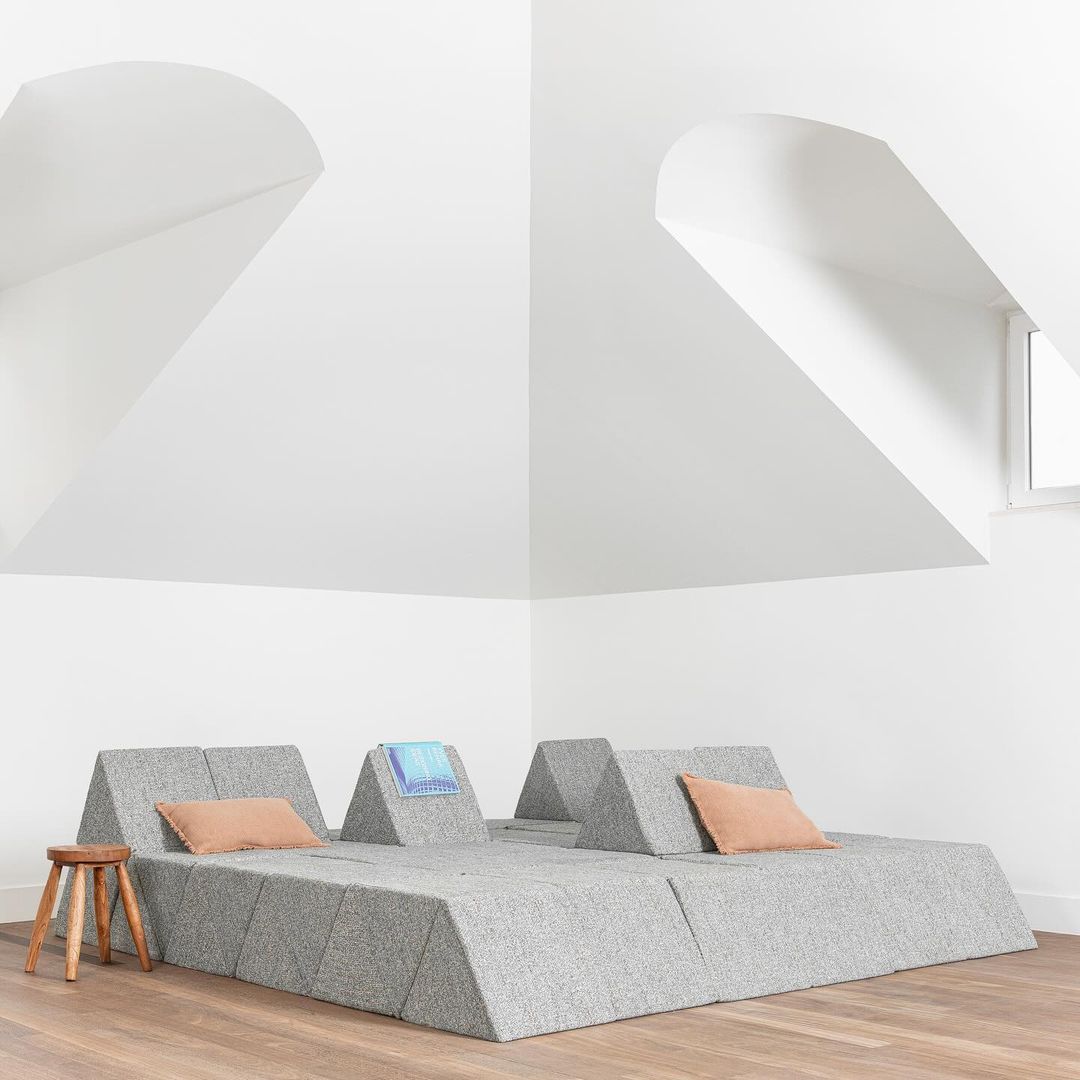
Peaks by Yves Behar for Moooi
More examples included Yves Behar's Peaks seating system for Moooi: 'conceived during [the pandemic], I was dreaming of human connection, play and silliness during the long months of isolation, I wondered about a sofa that would create intimacy and closeness,' says Behar. 'Peaks was born from the longing to come together, and today’s solution for the type of human cohesion and warmth we all need.'
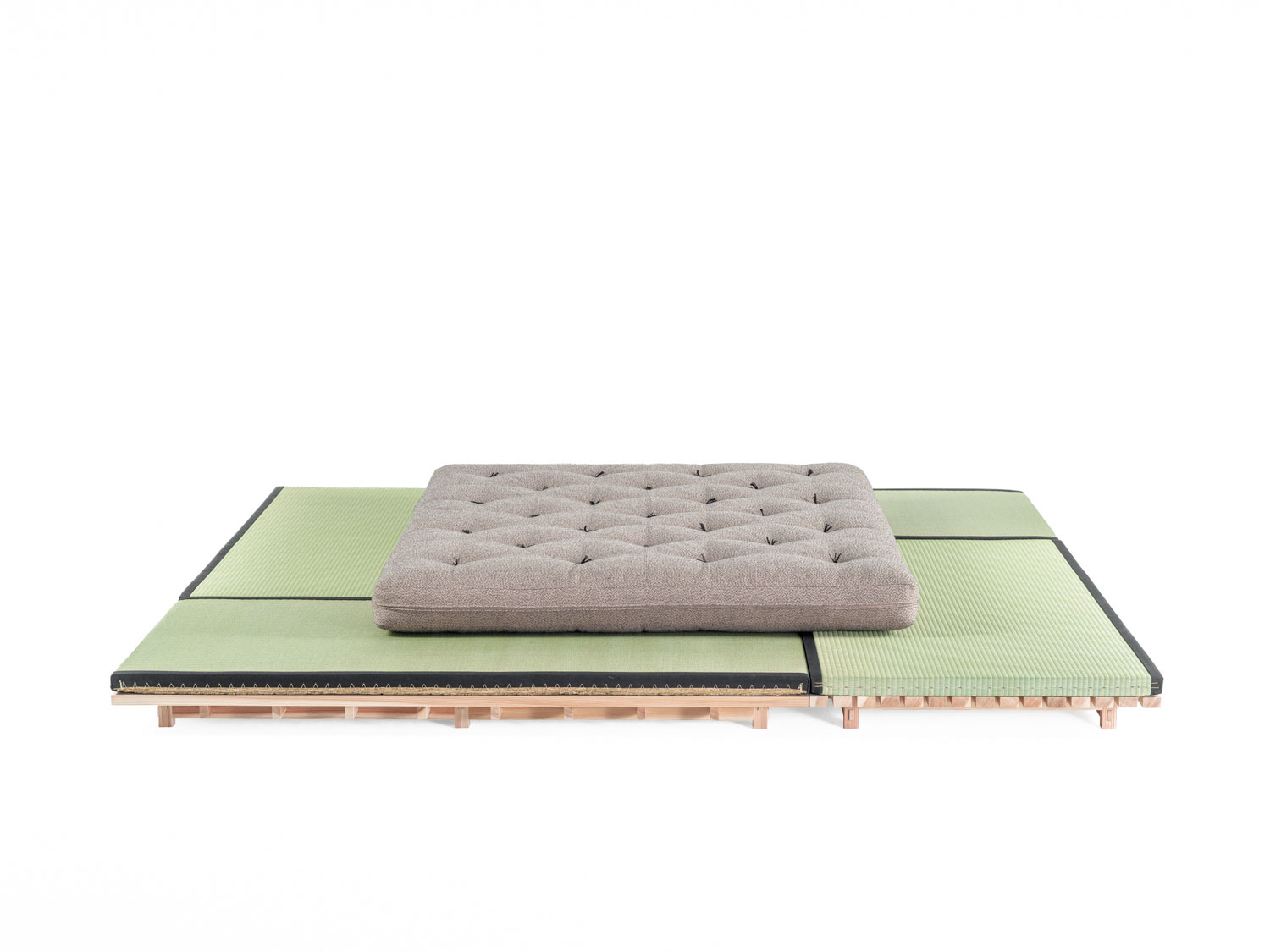
Another example was Time & Style's Stone Garden, a modular collection of tatami mat platforms hovering on bases of interlocked Akita cedar timber – inspired by the eaves of Zen Buddhist temples and the rock gardens that lie beneath them. 'It’s a new sofa concept without a backrest and it’s a very flexible system. You can sleep on this. You can meditate. You can read a book,' Ryutaro Yoshida, founder of Time & Style, tells Wallpaper*. 'In Japan, as most new apartments don’t have tatami but many people still love living with tatami. In Western homes, it can create a small authentic Japanese space.'
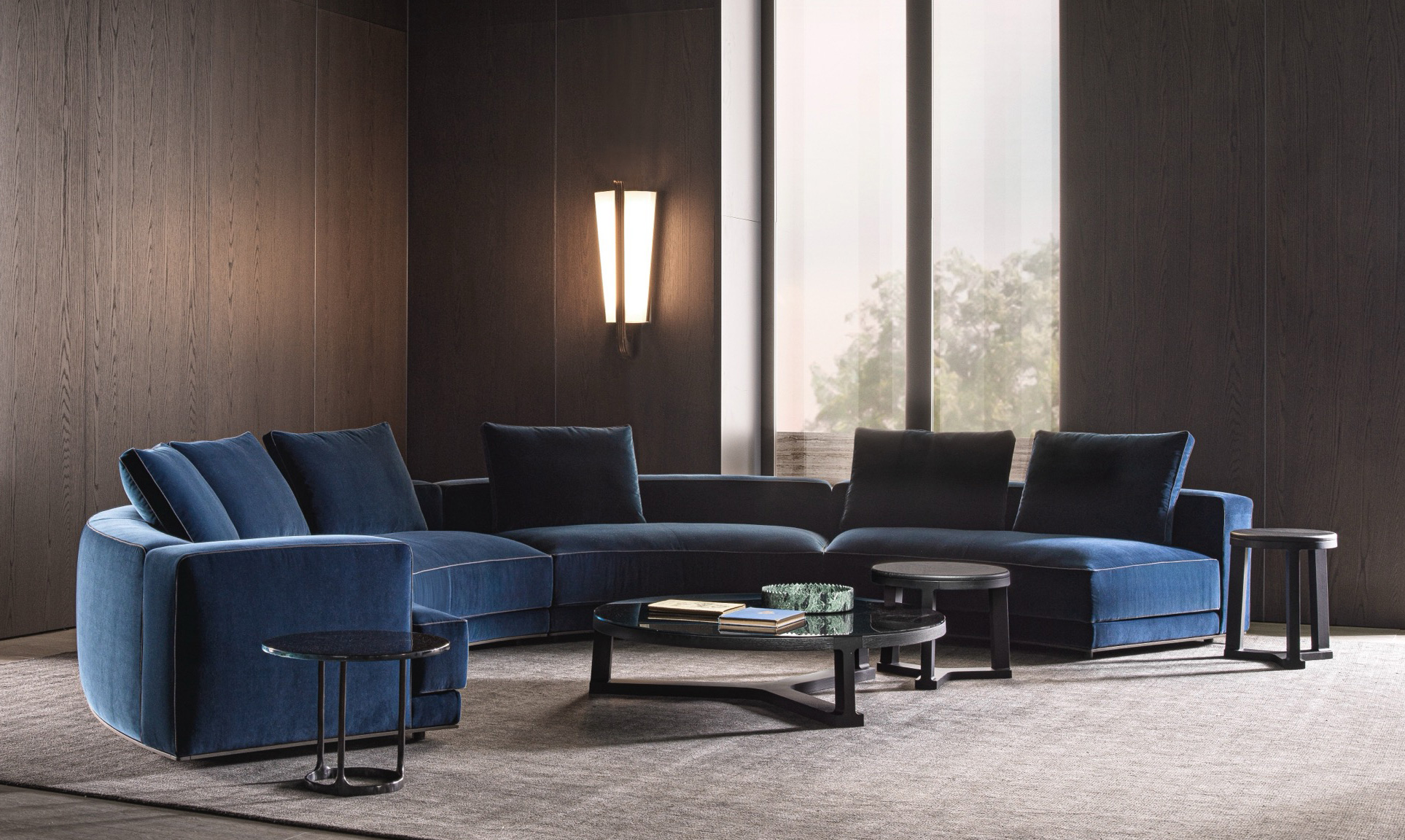
Augusto by Vincent van Duysen for Molteni & C
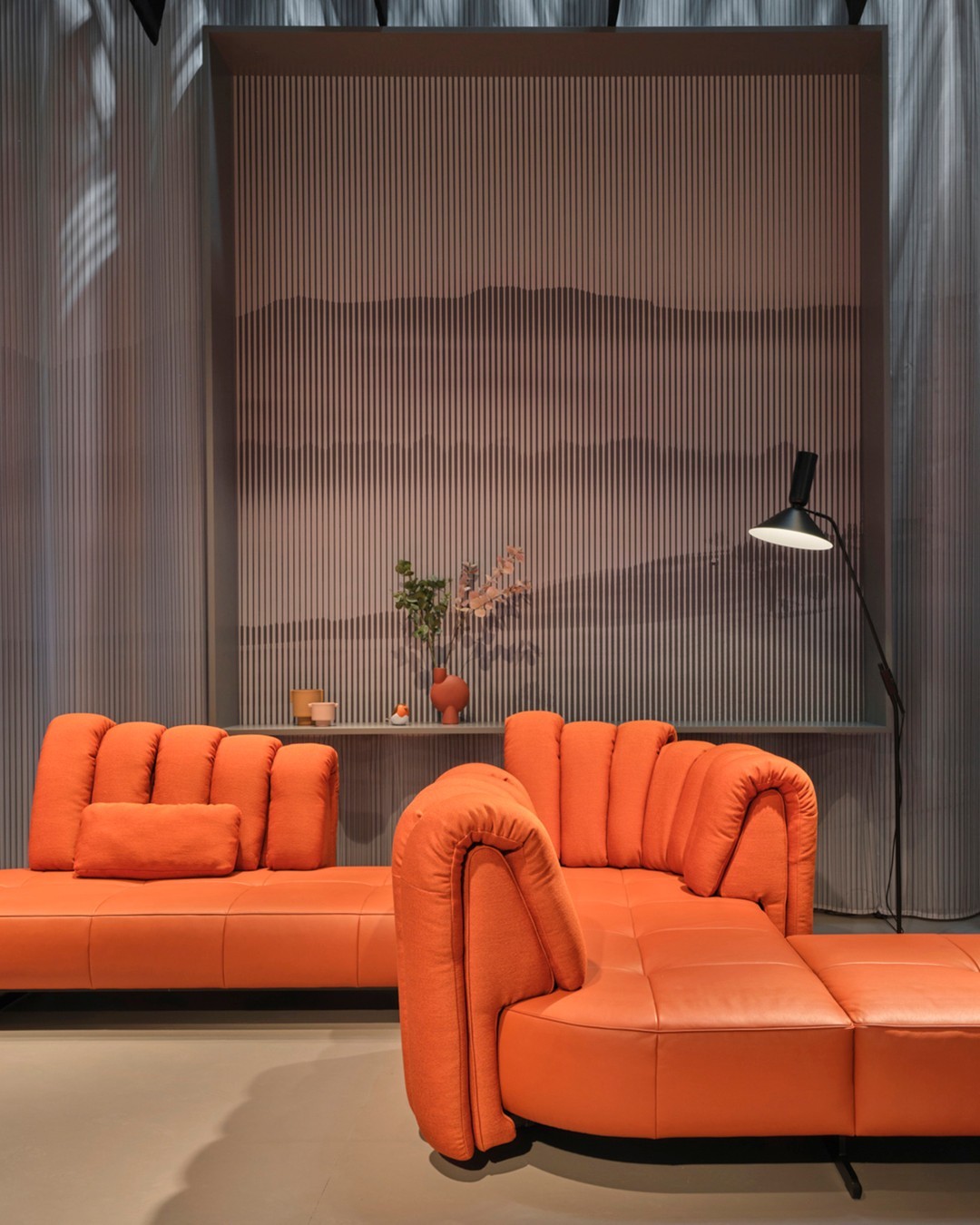
The more classic end of the spectrum included Molteni & C's Augusto by Vincent Van Duysen, revisited this year from a relatively compact sofa to a multifunctional system that included this semi-circular version. 'Van Duysen aims to further capture the enduring essence of Augusto through modularity, introducing innovative curvilinear pieces that foster connection,' reads a note from the company, which this year celebrates its 90th anniversary.
Swiss company DeSede, meanwhile, unveiled its new DS-888 Collina, a 'modular seating landscape' by Atelier Oi, imagined for an 'elegant and dynamic lifestyle,' and available in a multitude of compositions (and colours).
Wallpaper* Newsletter
Receive our daily digest of inspiration, escapism and design stories from around the world direct to your inbox.

Insula by Patricia Urquiola for Kettal
Spanish company Kettal took the concept to the outdoors with their new Insula system by Patricia Urquiola. Urquiola's design also offers a contemporary take on the traditional seating used in traditional Arab Majlis, with an idea of gathering and entertaining brought to an open space.
Low dining

Dudet sofa and armchair by Patricia Urquiola for Cassina
Many designers brought more informality to the dinner table with low seating systems for gathering casually around a meal or drink. Patricia Urquiola revisited her Dudet chair into a low seat and sofa option, inspired by easy dining and perfect for convivial moments.

Allure O' Dot table and chair by Monica Armani for B&B Italia
Another example was Monica Armani's extension of her Allure O' collection for B&B Italia, with a new table offered in a variety of versions, including a low bistro option that matches the compact armchairs in this lower version.
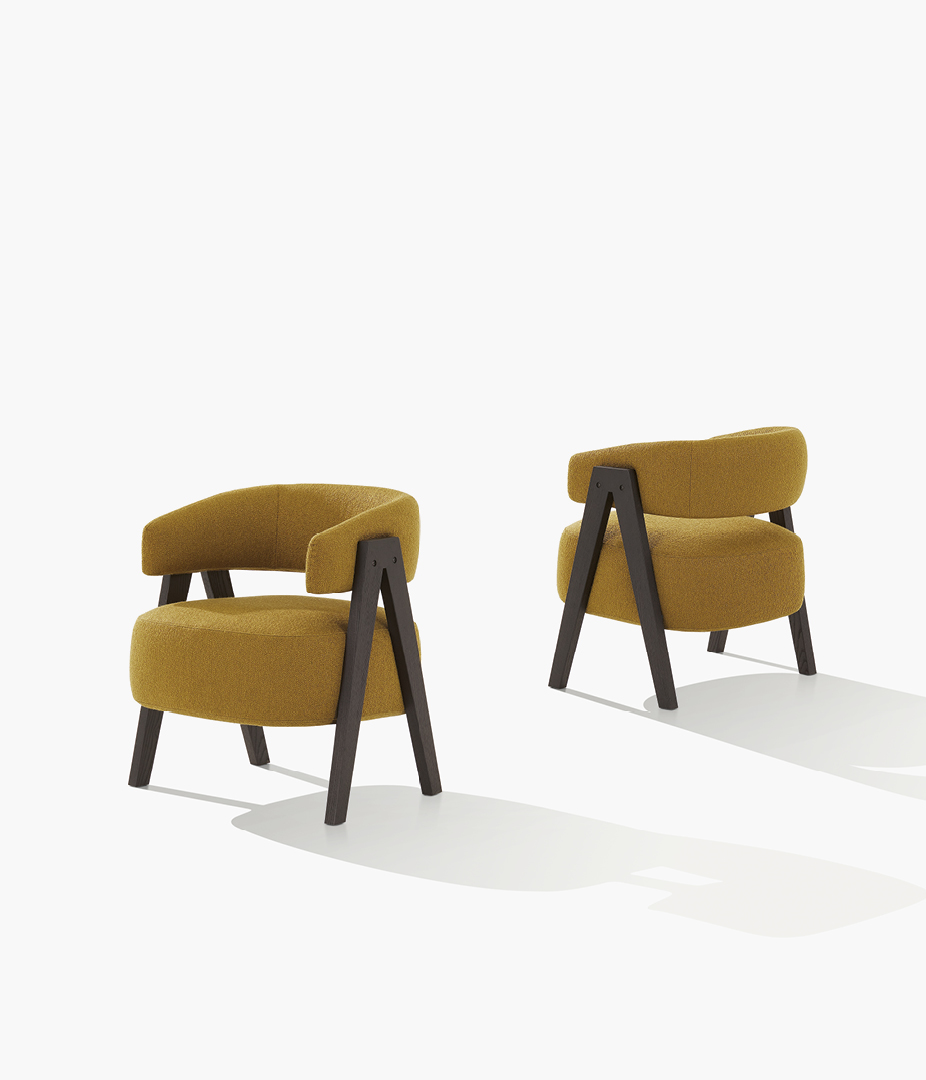
Loai chair by Stefano Belingardi Clusoni for Poliform
Another dining armchair option was offered by Poliform, who collaborated with Stefano Belingardi Clusoni on the Loai, 'an armchair made for low dining, highlighting the contrast between its compact size and extra-large seat, firm structure and soft cushioning.'
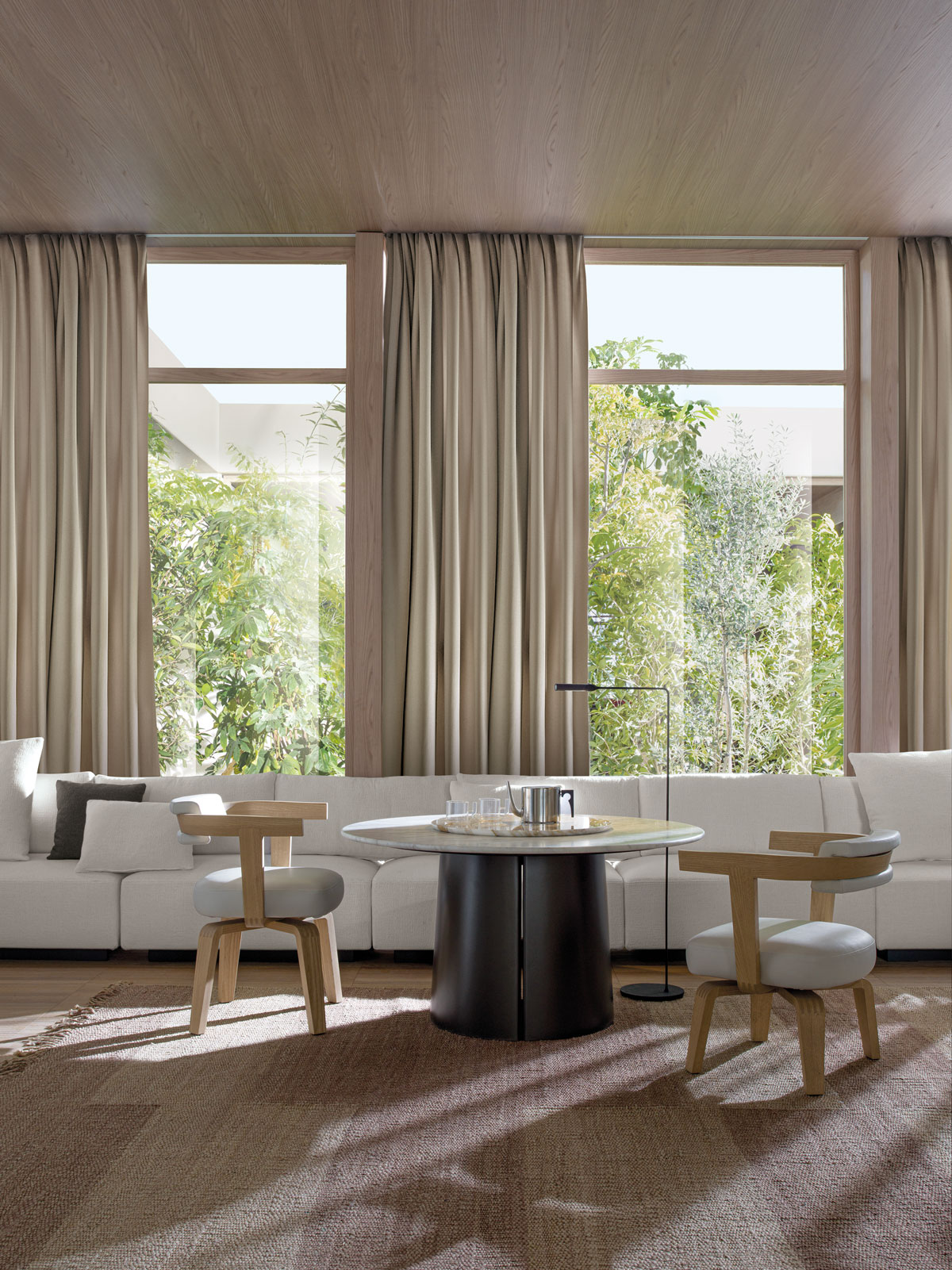
Mateo table by Vincent Van Duysen for Molteni & C
Finally, another adaptation of a contemporary icon is Mateo, Vincent Van Duysen's table for Molteni & C (originally shown in 2023, with a backdrop of Roberto Ruspoli's murals). 'The Mateo table caters to different family dynamics and social gatherings, serving as a focal point for creating enduring traditions,' reads a note from the designer, who with his adaptable concept wanted to reinvent the notion of dining in a contemporary home.
Cushiony upholstery
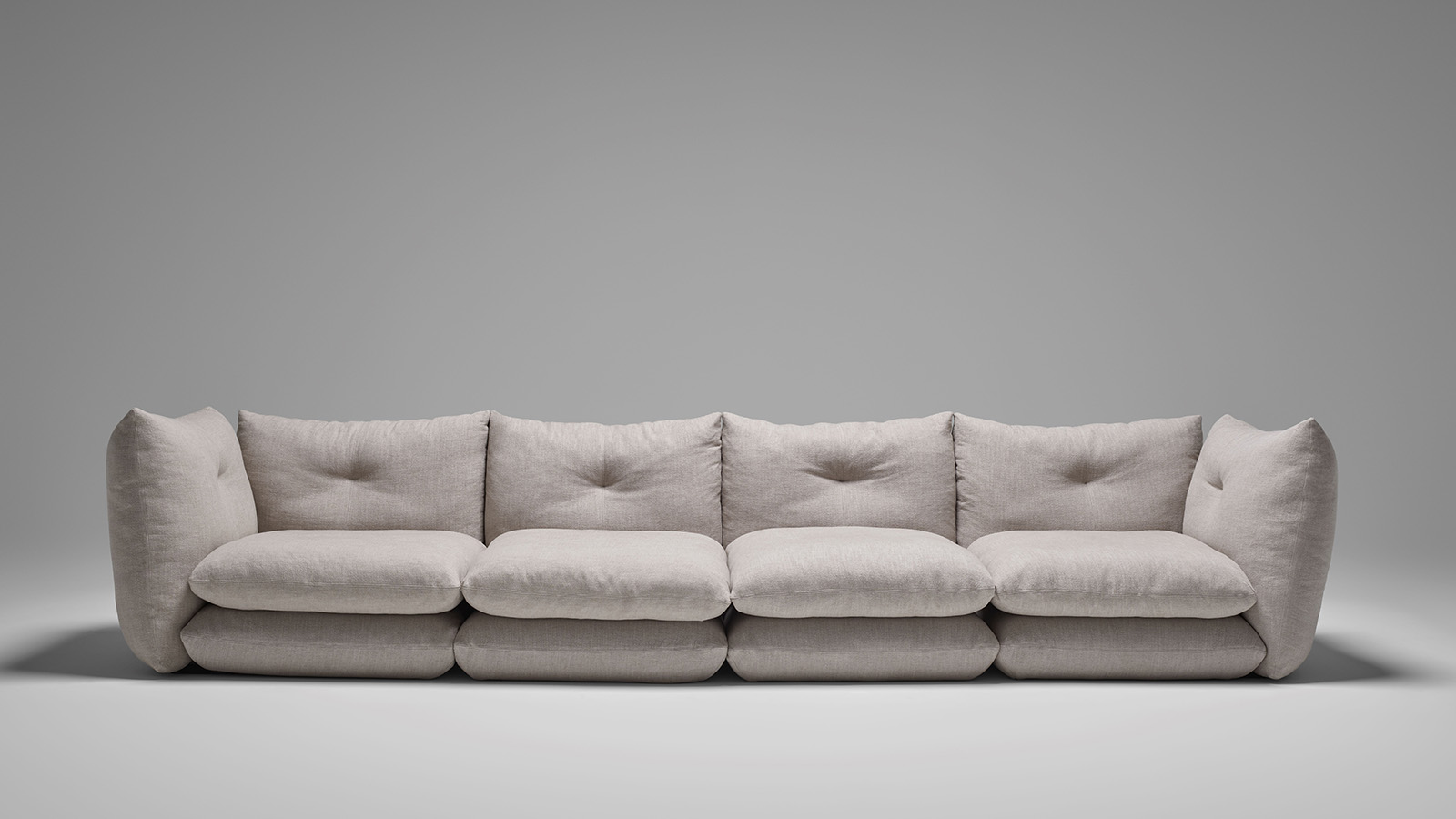
At Salone del Mobile this year there was a diffused sense of comfort, with upholstered pieced that veered away from the usual controlled lines and into more puffy, squishy territories. An example was Willo Perron's ‘Pillo’ sofa for Knoll - a company best known for reissuing the more rigid Bauhaus shapes of Marcel Breuer and Mies Van Der Rohe, as well as Florence Knoll and Harry Bertoia.
The ‘Pillo’ sofa reflects Perron’s idea for the future home: his sofa design, he points out, is meant to be ‘enjoyed in daily life’. As the name suggests, the sofa’s forms are based on a composition of pillows that is completely modular and can adapt to design and lifestyle changes within the home.
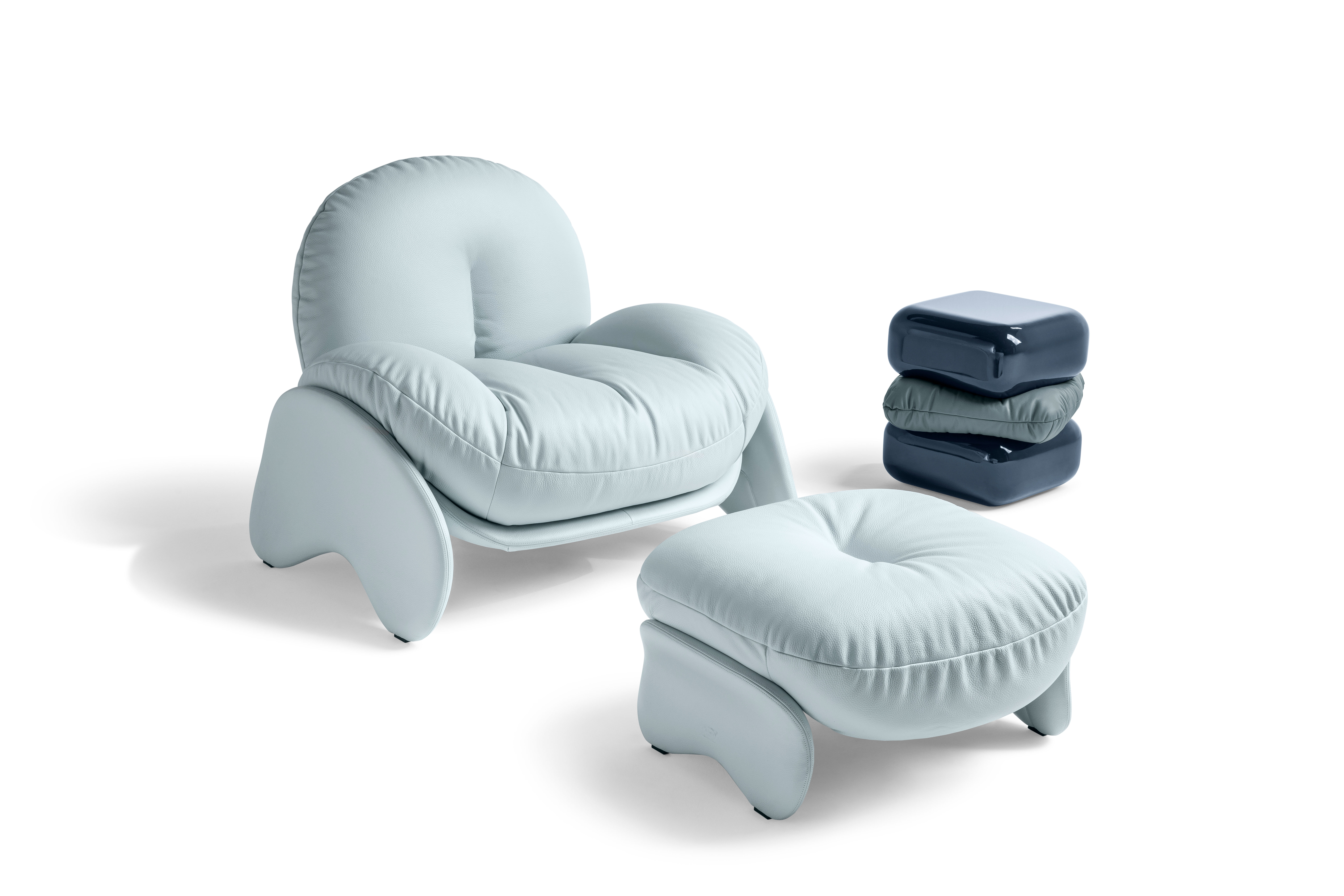
Another example of this approach came from Poltrona Frau's collaboration with Faye Toogood: dubbed 'Squash', the collection includes an armchair with curvaceous forms and an enveloping seat. ‘They allowed me to be expressive, and to let myself loose in the factory,’ she told Wallpaper*. ‘I wanted to create something that was really comfortable, really soft. I insisted that I didn’t want the leather to be stretched and perfect, I want to give the feeling that you can sink into it, to look like it’s already been sat on, like it's already had a life. To me this is the beauty of this material.’
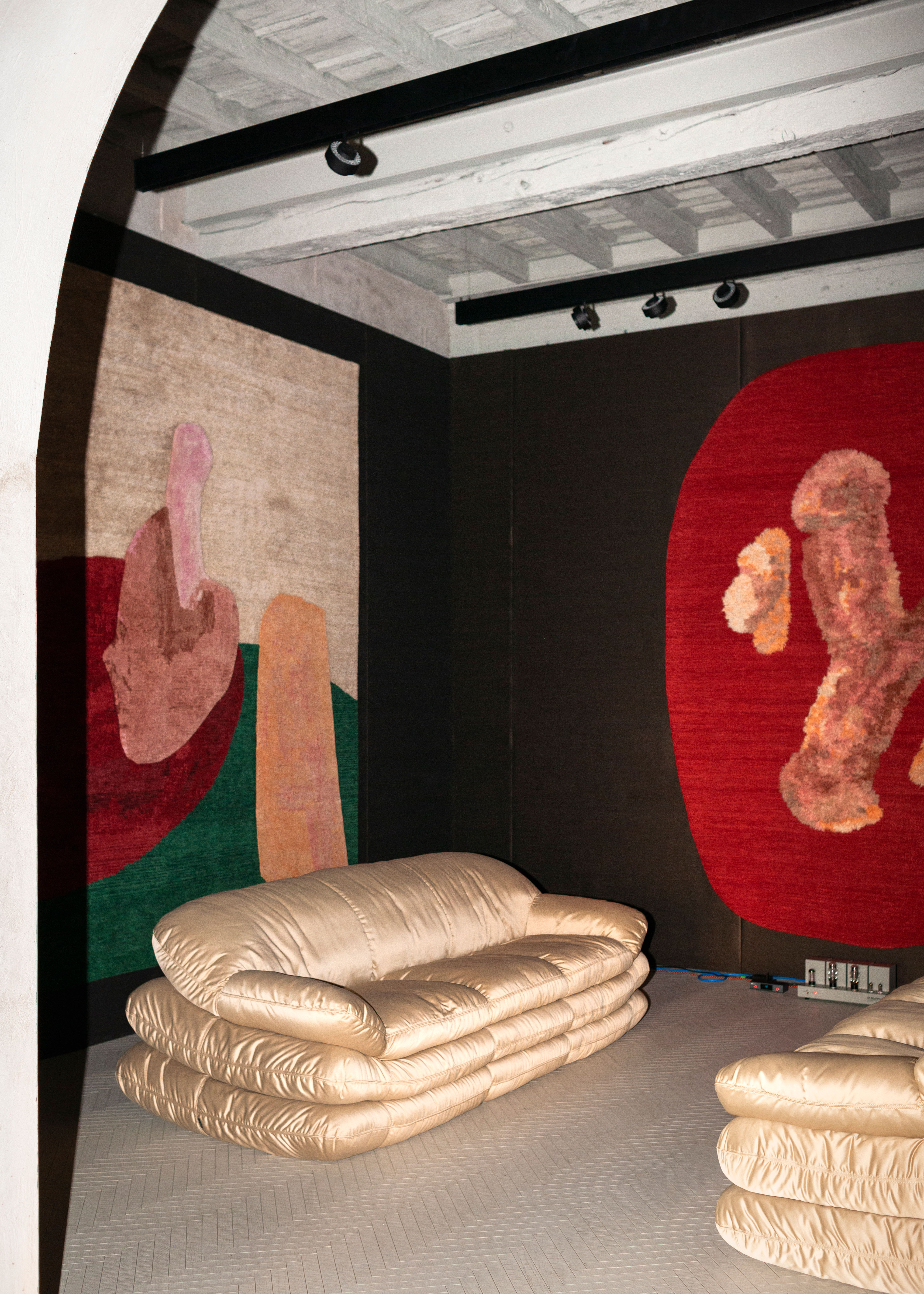
Cosmic by Faye Toogood for Tacchini
Toogood also experimented with the cushion format through her collaboration with Tacchini, shown as part of her Rude Arts Club in Milan. Essentially a stack of cushions, the sofa and lounge chair embody the informal approach to seating that was very much the norm this year. 'The shape of the chair came from pushing my fingers into the clay maquette, squashing the three layers together,' reveals Toogood. 'I don’t connect with design done at a distance. These biomorphic shapes haven’t been created on a computer, they are found by hand.'
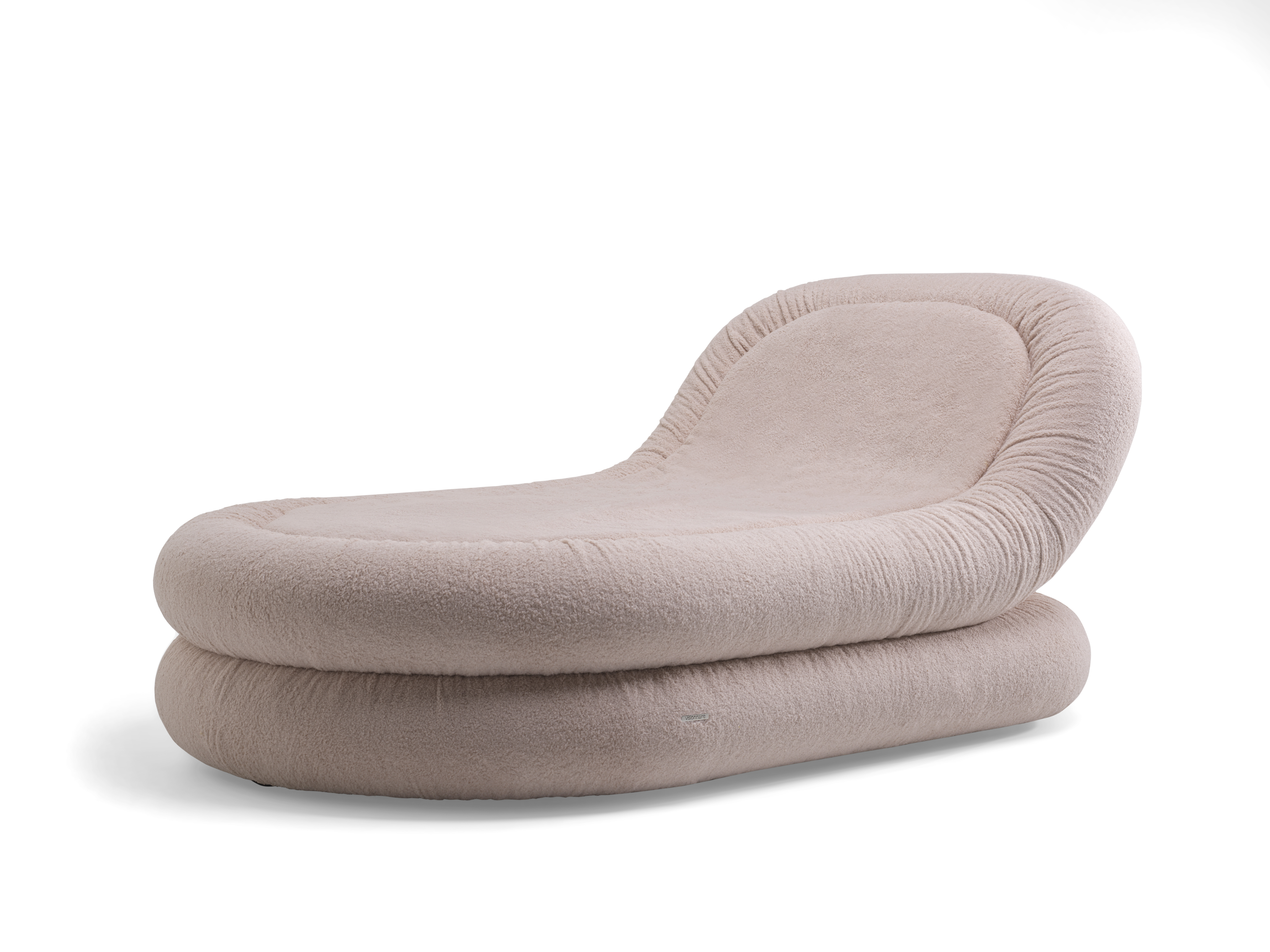
Fedro Chaise Longue by Studiopepe for Visionnaire
Similarly, Studiopepe worked with Visionnaire on the Fedro Chaise Longue, imagined as an extension of the design studio's fringed mirrors and inspired by the enveloping forms of ancient triclinia.
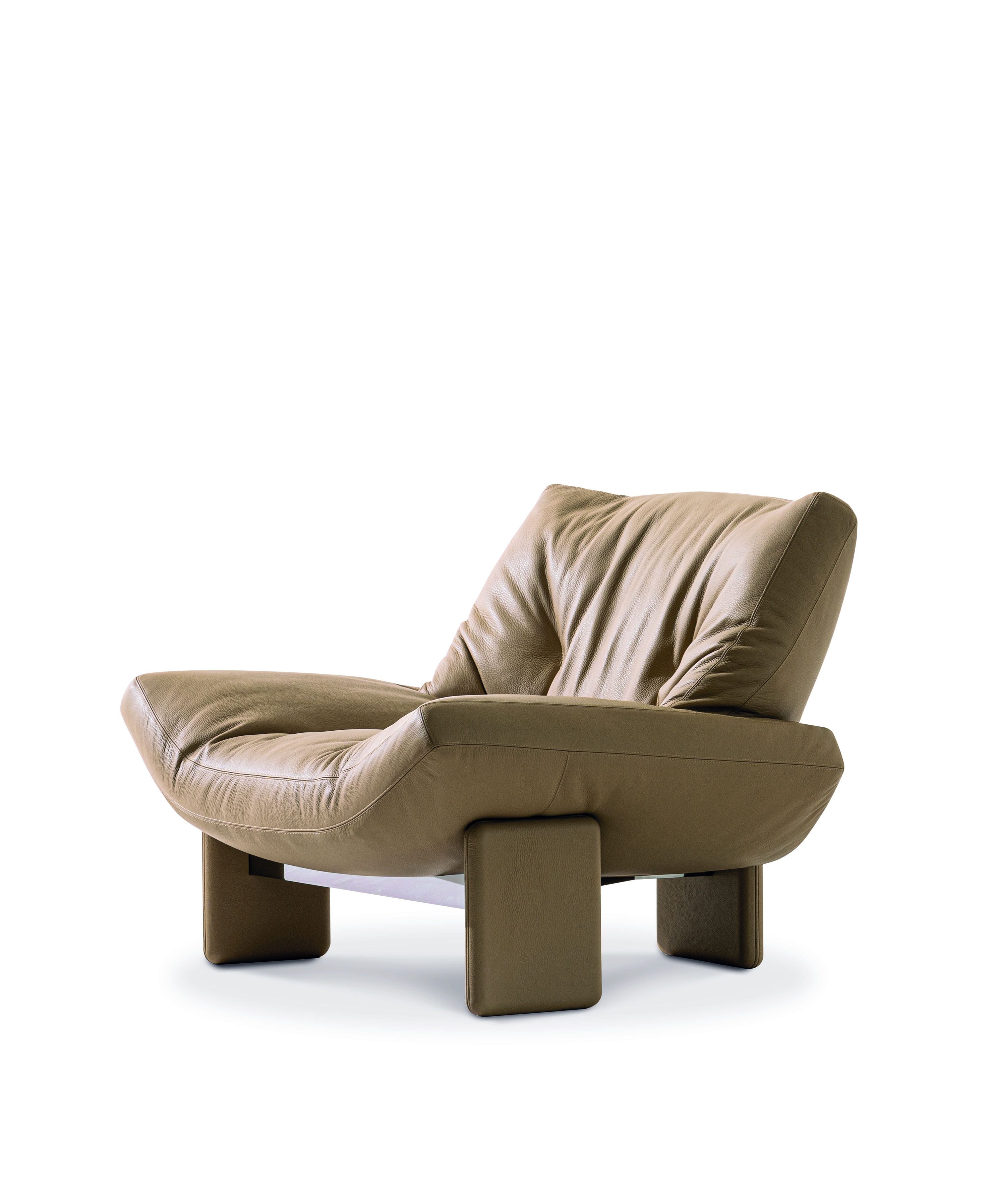
Emmi by Hannes Peer for Minotti
More informal upholstery was found at Minotti, whose Emmi armchair by Hannes Peer echoes 'the generous and comfortable armchairs of the 1970s.' The cushioned seat and backrest seem to be informally placed on the frame, but in reality they are the result of Minotti's rigorous manufacturing abilities.
Folded arrangements
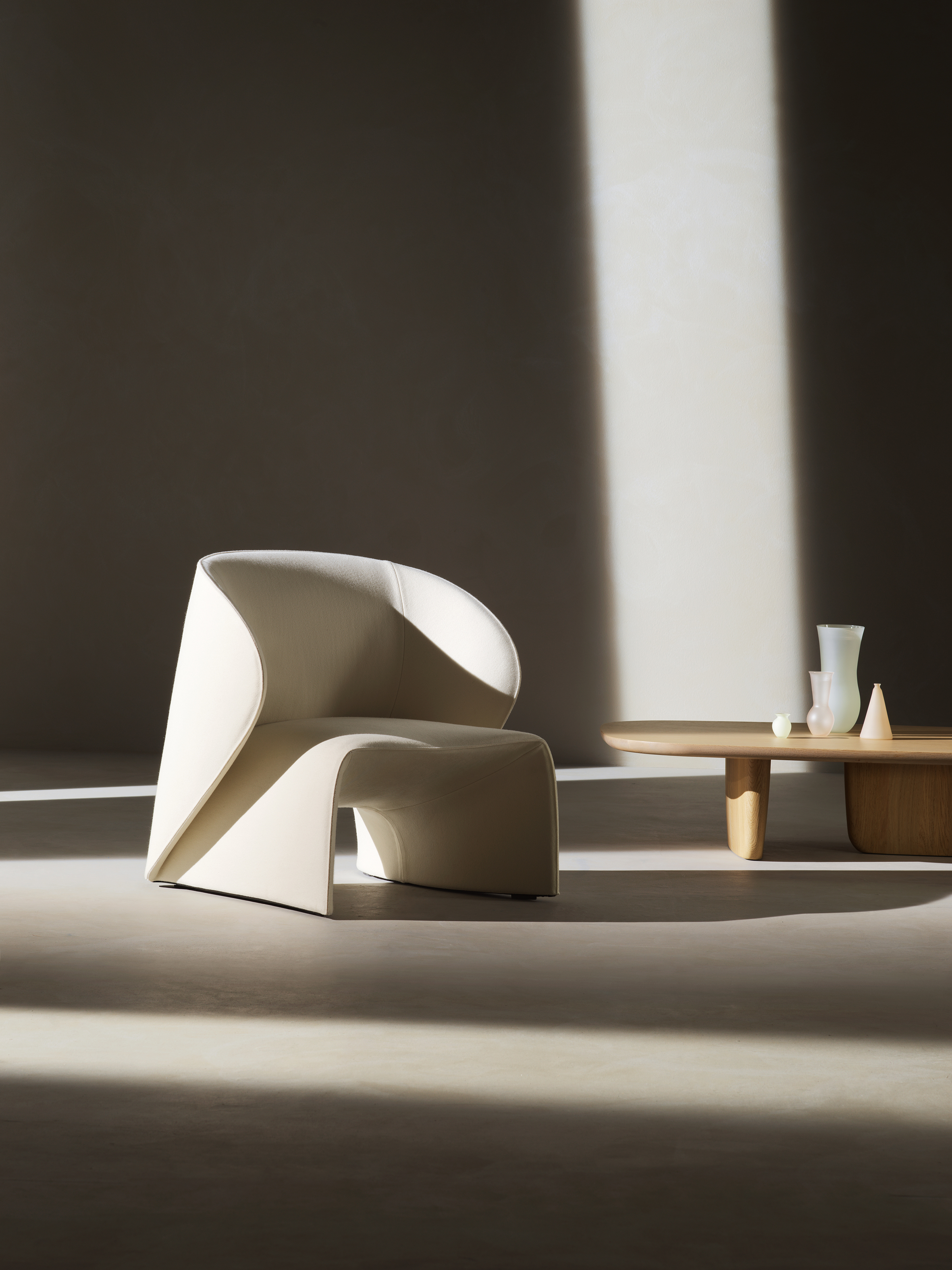
Narinari by Tiziano Guardini and Luigi Ciuffreda for B&B Italia
Origami-like shapes kept popping up across Salone del Mobile this year, with experimental approaches to furniture construction seen from established brands and more emerging creatives. The Narinari chair by Tiziano Guardini and Luigi Ciuffreda for B&B Italia is a folded marvel whose forms are inspired by Sea Eagles. 'This magnificent specimen with its colourful back and white front surface creates harmonies of contrasts, concave and convex surfaces coexisting in its sinuous flow,' say the designers. 'Narinari becomes the symbol of a connection that respects individual spaces, where two entities only brush against each other along the perimeter, each keeping its own identity and autonomy intact.'
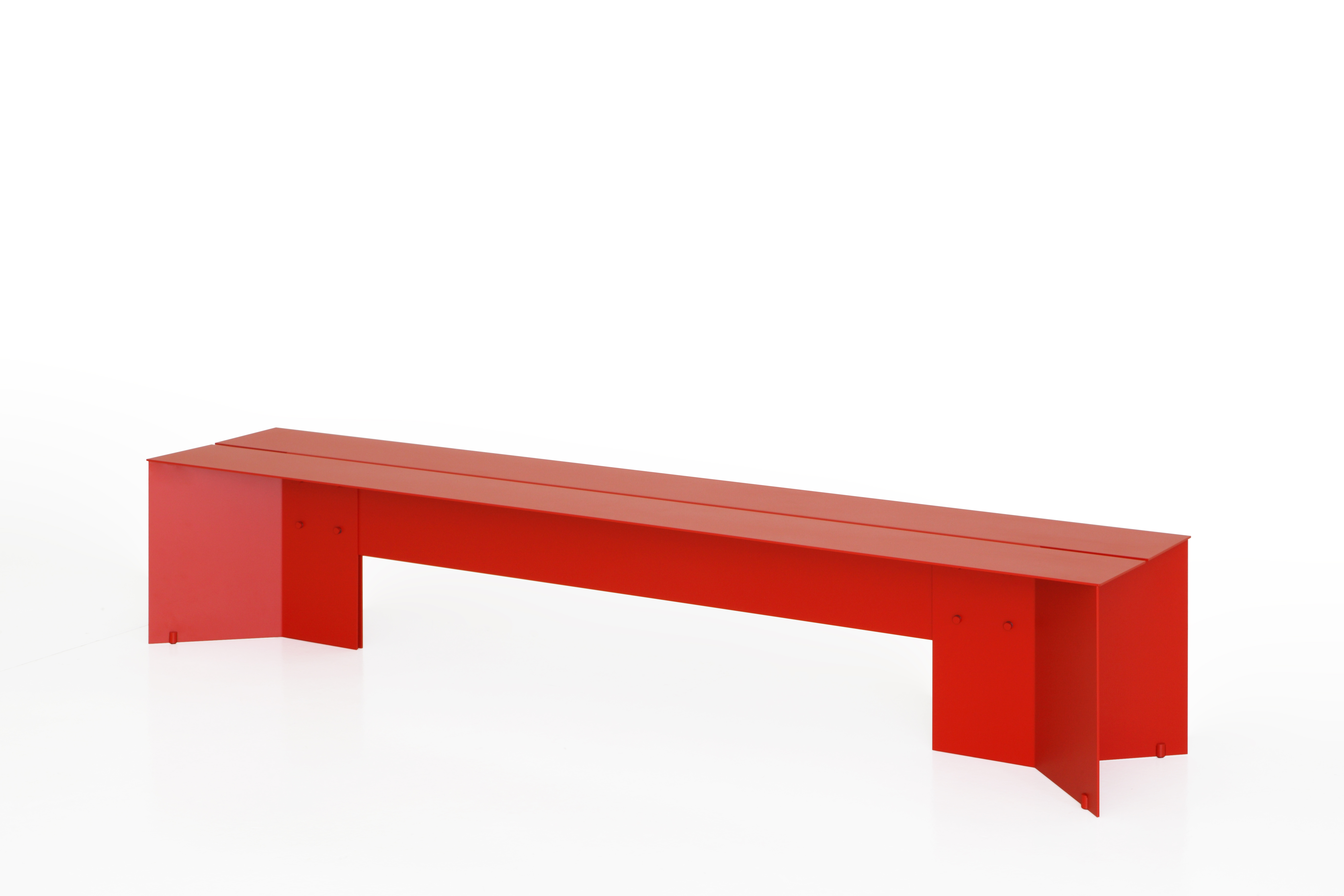
Origata bench by Nao Tamura for Porro
Meanwile, Nao Tamura's Origata bench for Porro is directly inspired by the process of making kimonos: to create the traditional Japanese garment, a rectangular piece of fabric is cut in straight lines and then sewn together with little to no waste – a method replicated in the making of this bench, with a sheet of aluminium carefully cut and assembled to waste as little metal as possible.
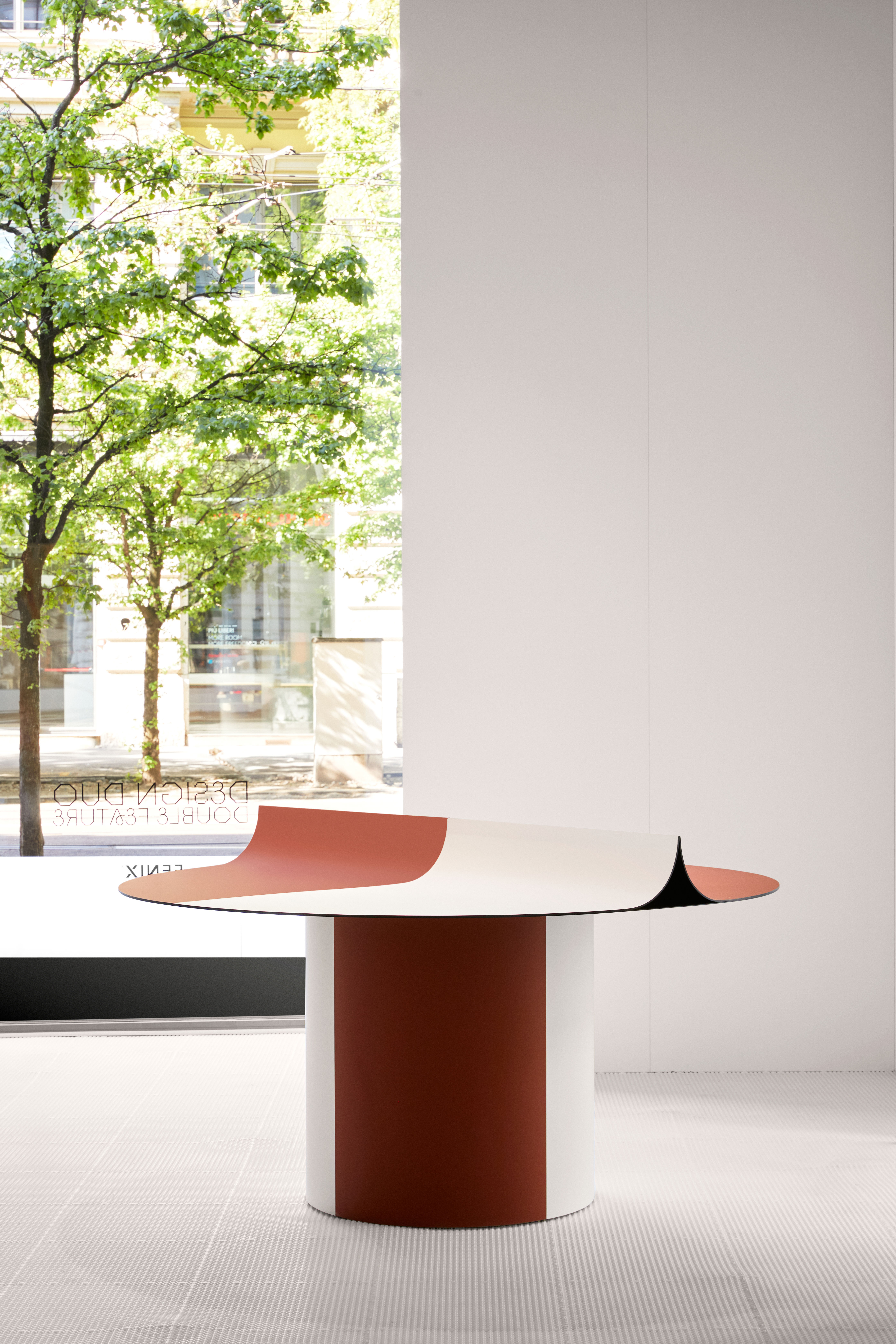
At an exhibition curated by Federica Sala challenging designers to come up with objects that have a dual function, Martinelli Venezia created 'Match', a ping pong and dining table whose raised top felt like an effortless exercise in adding function to a surface.
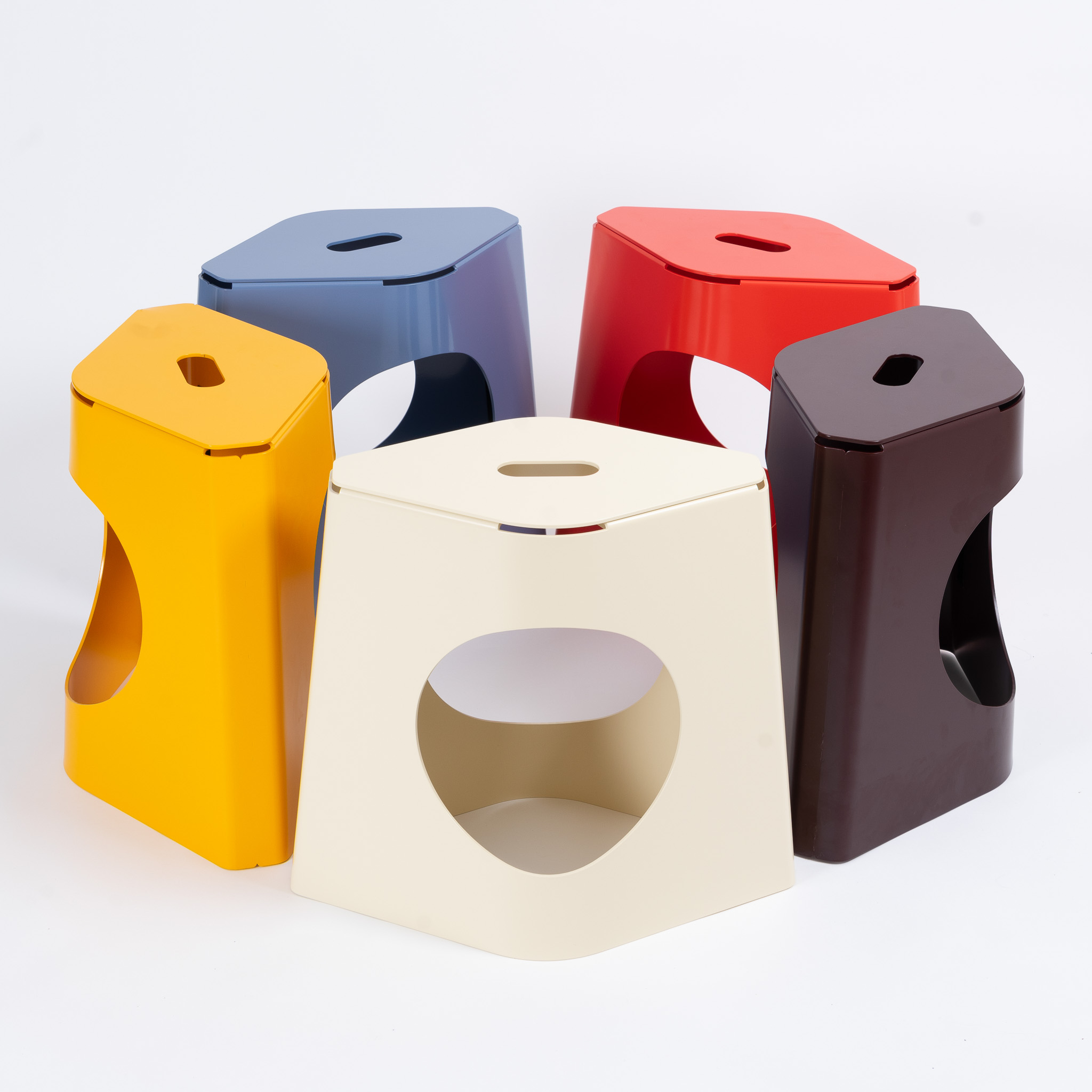
Pascal Hien's Prism stool for Tecta
Designed for Tecta, Pascal Hien's Prism stool is an example of modular folded forms: a stackable design made of bent aluminium, its idea comes from the designer's experience in an office environment. 'That cosmos in which flexible spaces are needed, where workshops and meetings take place, sometimes with five, but also with 50 people,' he explains. 'This stool offers a quick seating option, providing a space underneath to house a bag, jacket or any personal belongings. It stacks and can retract into a corner when not needed anymore.'
Rosa Bertoli was born in Udine, Italy, and now lives in London. Since 2014, she has been the Design Editor of Wallpaper*, where she oversees design content for the print and online editions, as well as special editorial projects. Through her role at Wallpaper*, she has written extensively about all areas of design. Rosa has been speaker and moderator for various design talks and conferences including London Craft Week, Maison & Objet, The Italian Cultural Institute (London), Clippings, Zaha Hadid Design, Kartell and Frieze Art Fair. Rosa has been on judging panels for the Chart Architecture Award, the Dutch Design Awards and the DesignGuild Marks. She has written for numerous English and Italian language publications, and worked as a content and communication consultant for fashion and design brands.
-
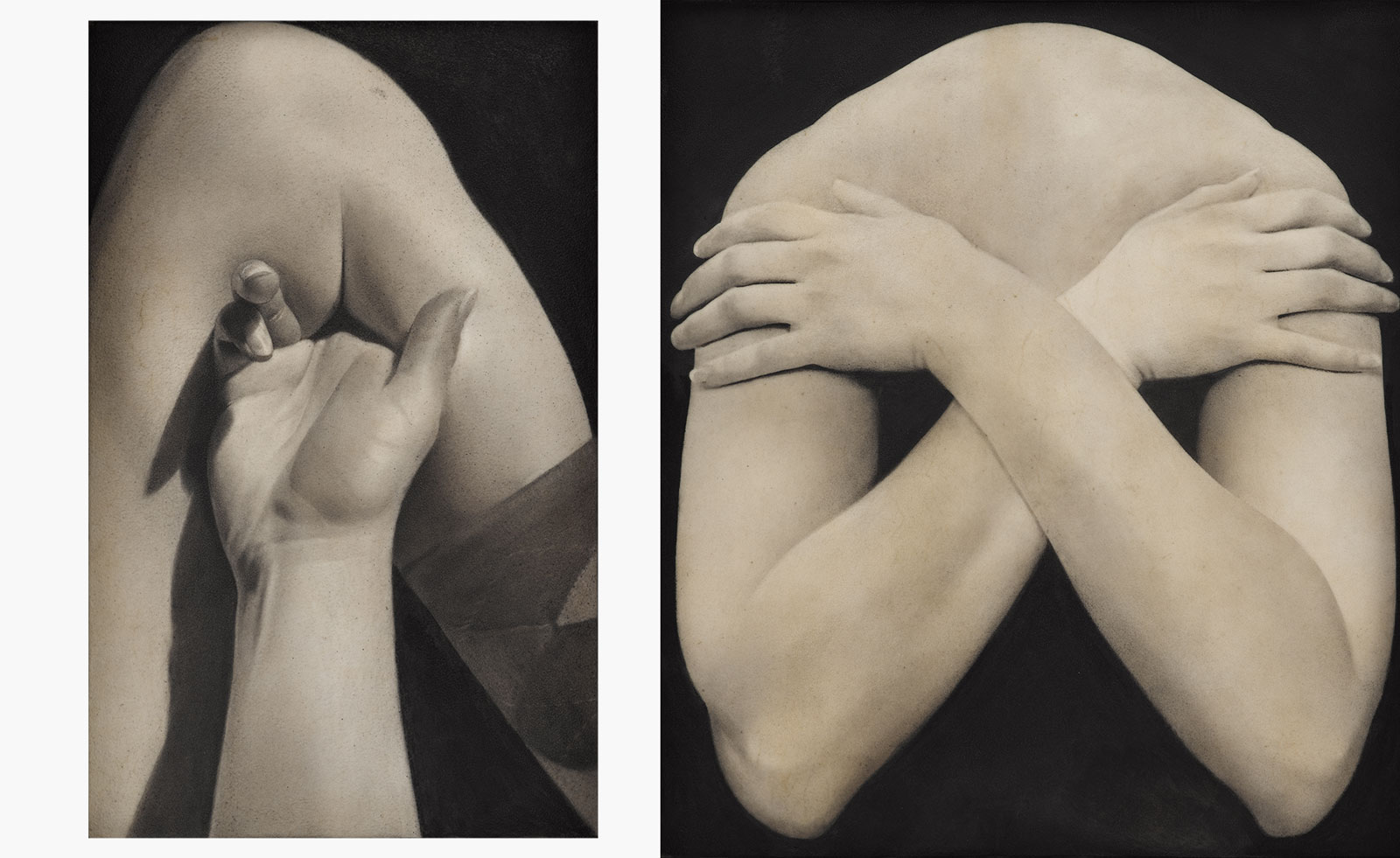 Put these emerging artists on your radar
Put these emerging artists on your radarThis crop of six new talents is poised to shake up the art world. Get to know them now
By Tianna Williams
-
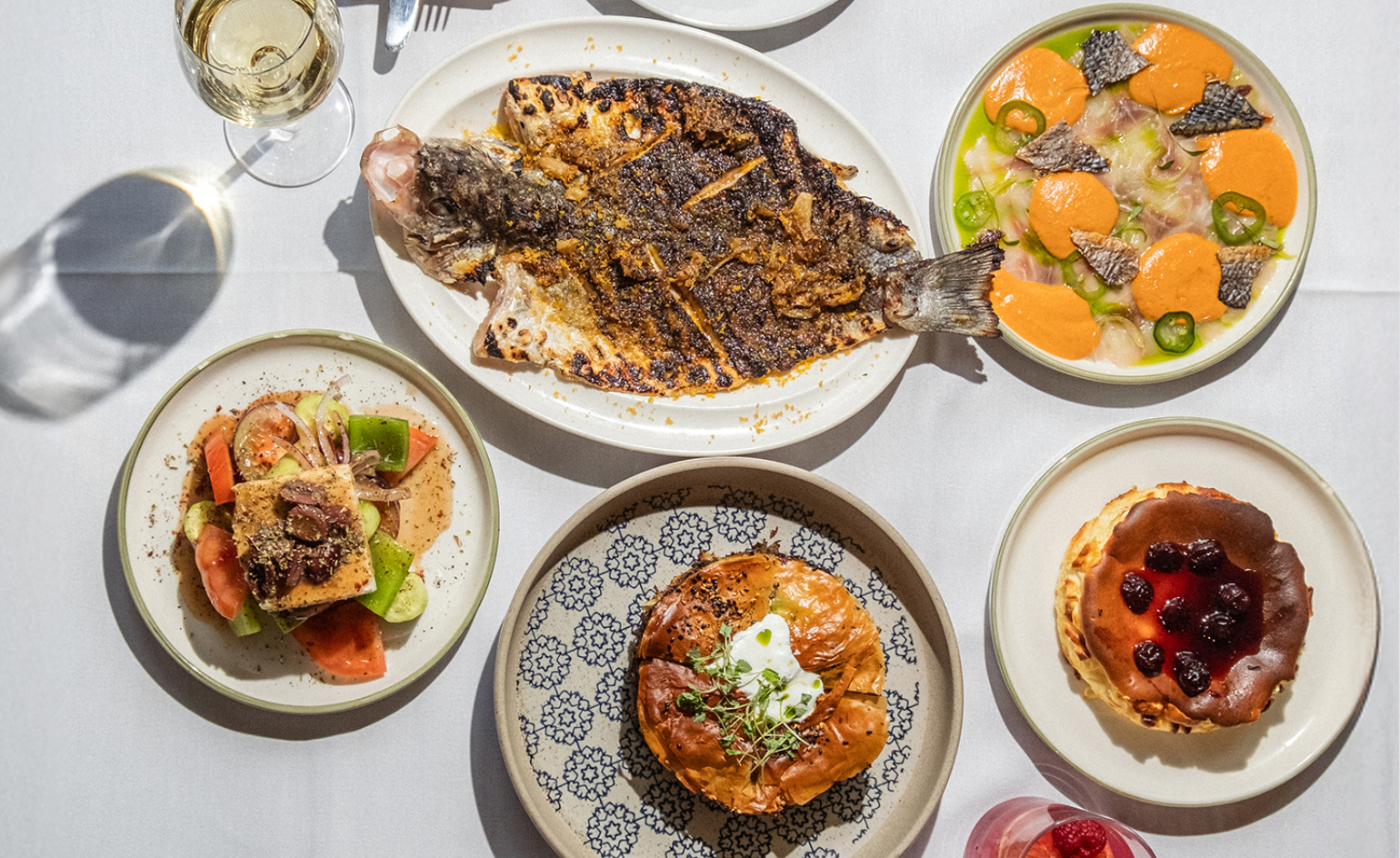 Dining at Pyrá feels like a Mediterranean kiss on both cheeks
Dining at Pyrá feels like a Mediterranean kiss on both cheeksDesigned by House of Dré, this Lonsdale Road addition dishes up an enticing fusion of Greek and Spanish cooking
By Sofia de la Cruz
-
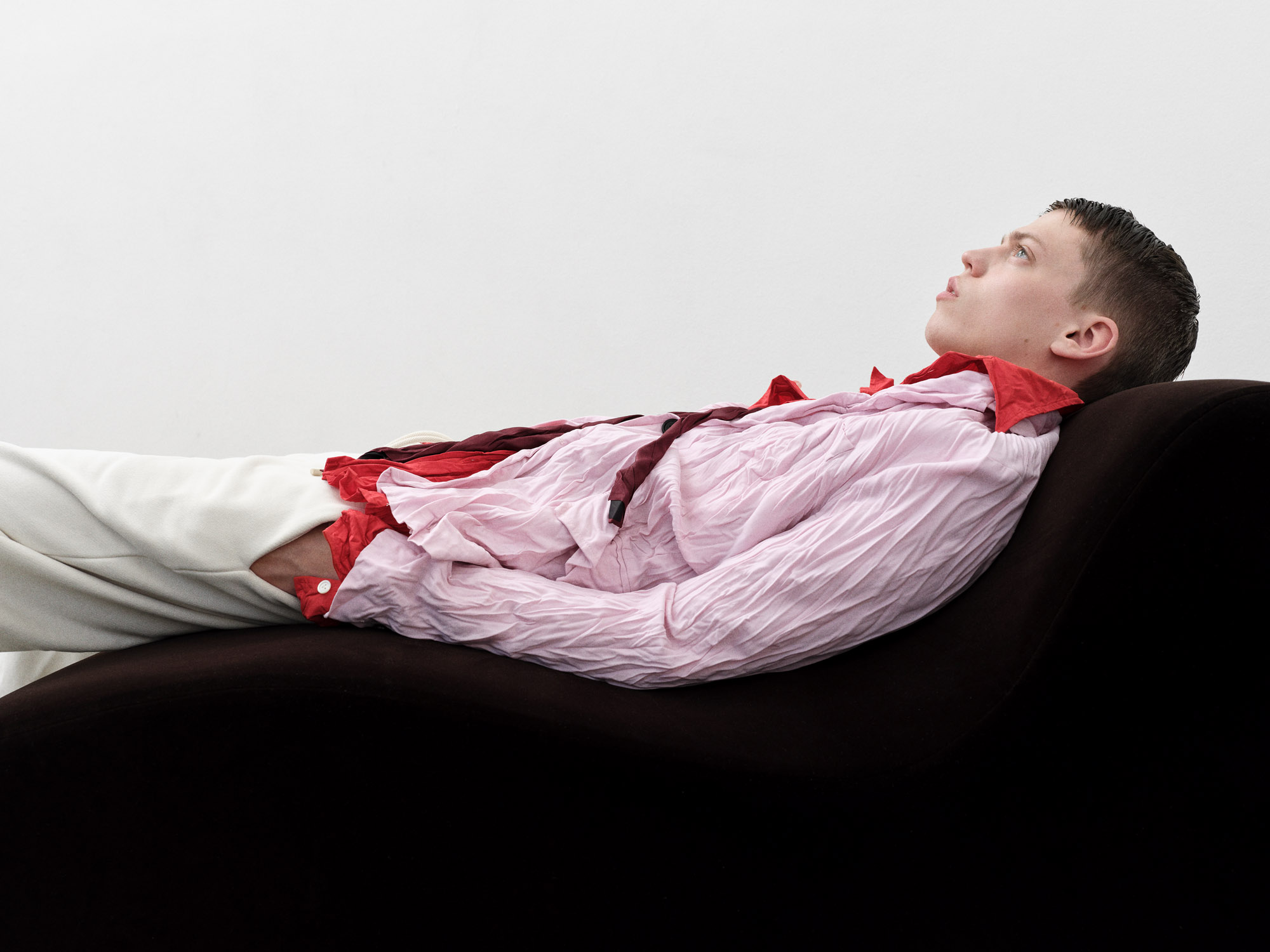 Creased, crumpled: S/S 2025 menswear is about clothes that have ‘lived a life’
Creased, crumpled: S/S 2025 menswear is about clothes that have ‘lived a life’The S/S 2025 menswear collections see designers embrace the creased and the crumpled, conjuring a mood of laidback languor that ran through the season – captured here by photographer Steve Harnacke and stylist Nicola Neri for Wallpaper*
By Jack Moss
-
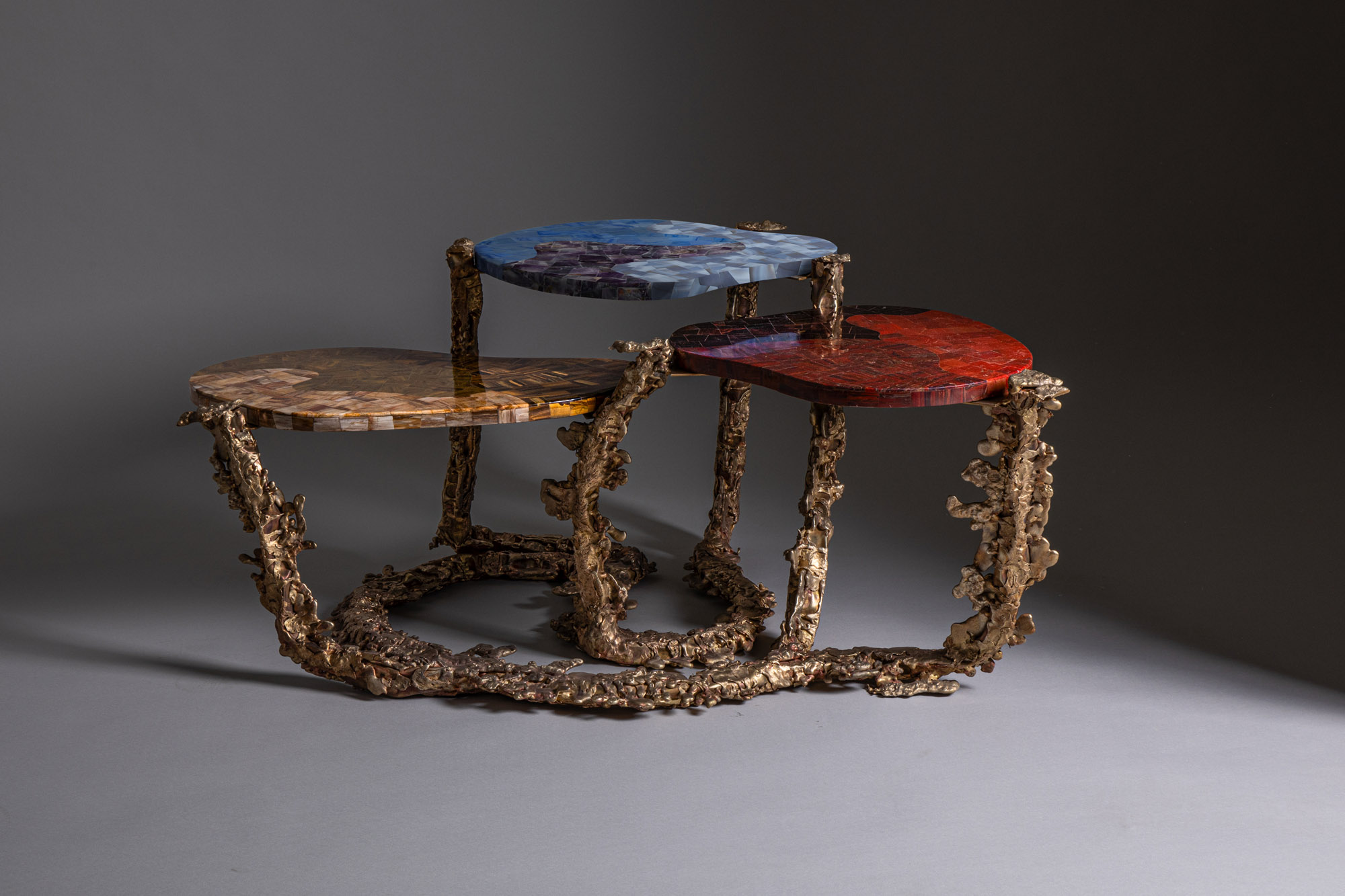 Inside the Shakti Design Residency, taking Indian craftsmanship to Alcova 2025
Inside the Shakti Design Residency, taking Indian craftsmanship to Alcova 2025The new initiative pairs emerging talents with some of India’s most prestigious ateliers, resulting in intricately crafted designs, as seen at Alcova 2025 in Milan
By Henrietta Thompson
-
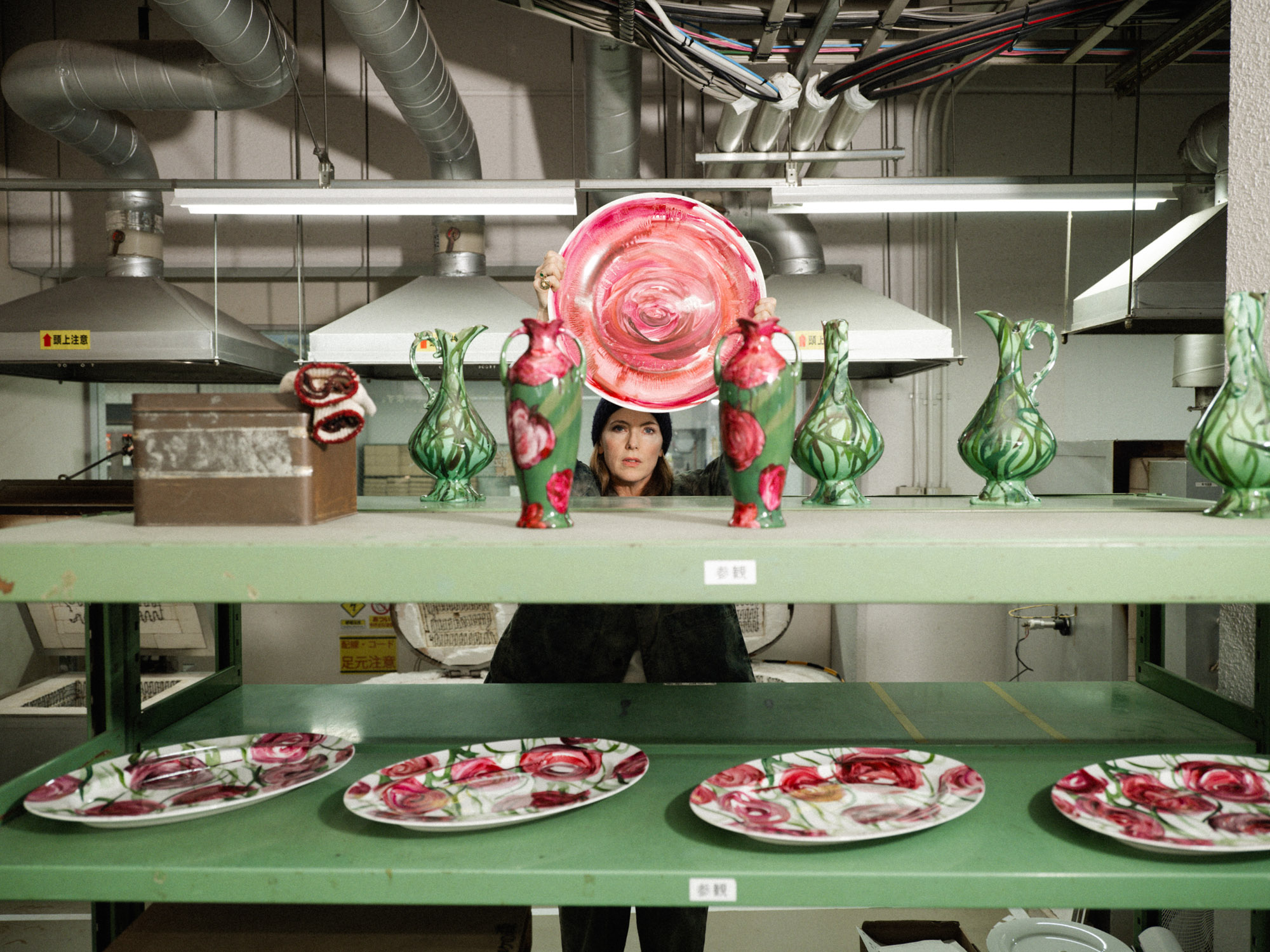 Faye Toogood comes up roses at Milan Design Week 2025
Faye Toogood comes up roses at Milan Design Week 2025Japanese ceramics specialist Noritake’s design collection blossoms with a bold floral series by Faye Toogood
By Danielle Demetriou
-
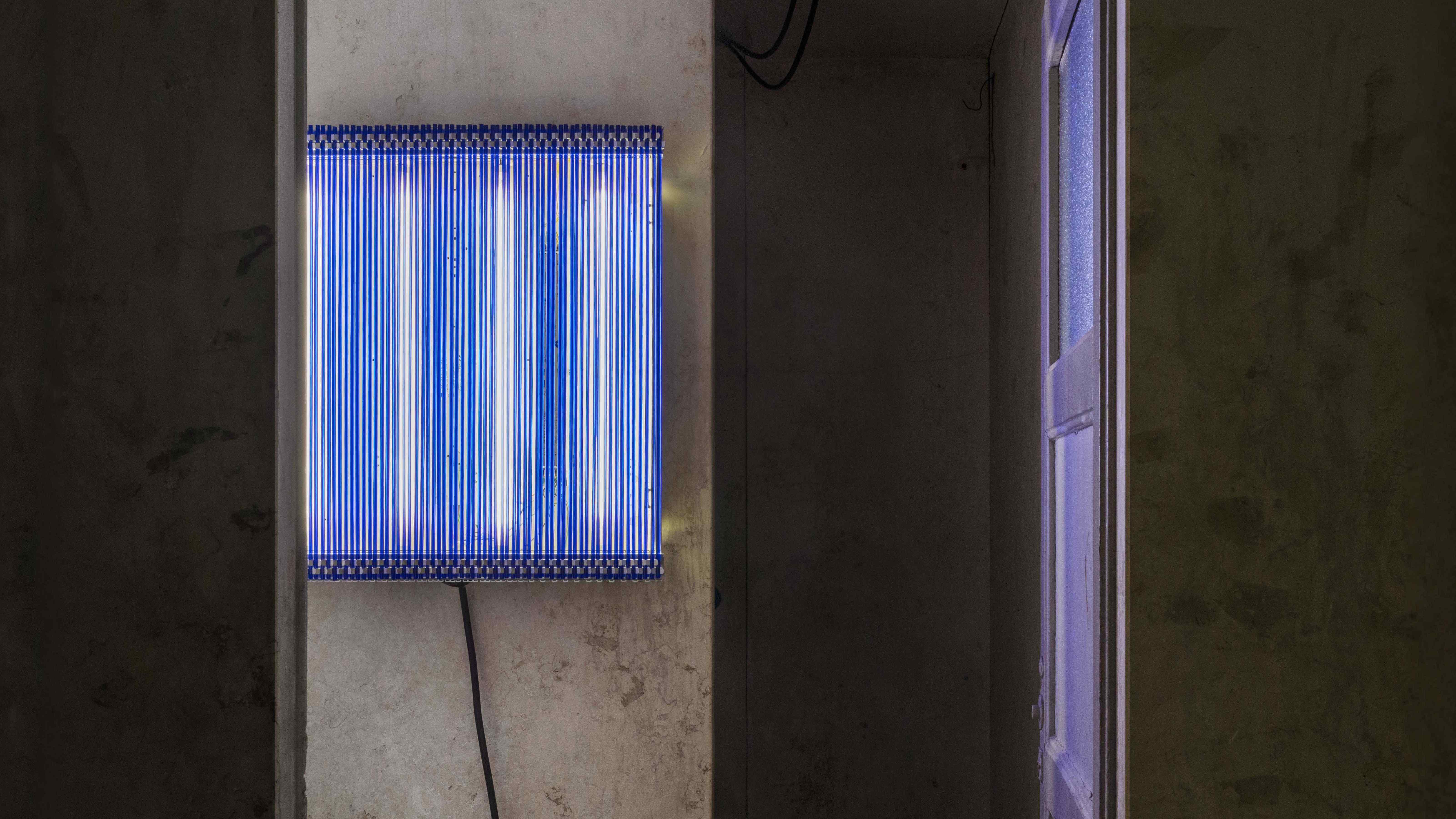 6:AM create a spellbinding Murano glass showcase in Milan’s abandoned public shower stalls
6:AM create a spellbinding Murano glass showcase in Milan’s abandoned public shower stallsWith its first solo exhibition, ‘Two-Fold Silence’, 6:AM unveils an enchanting Murano glass installation beneath Piscina Cozzi
By Ali Morris
-
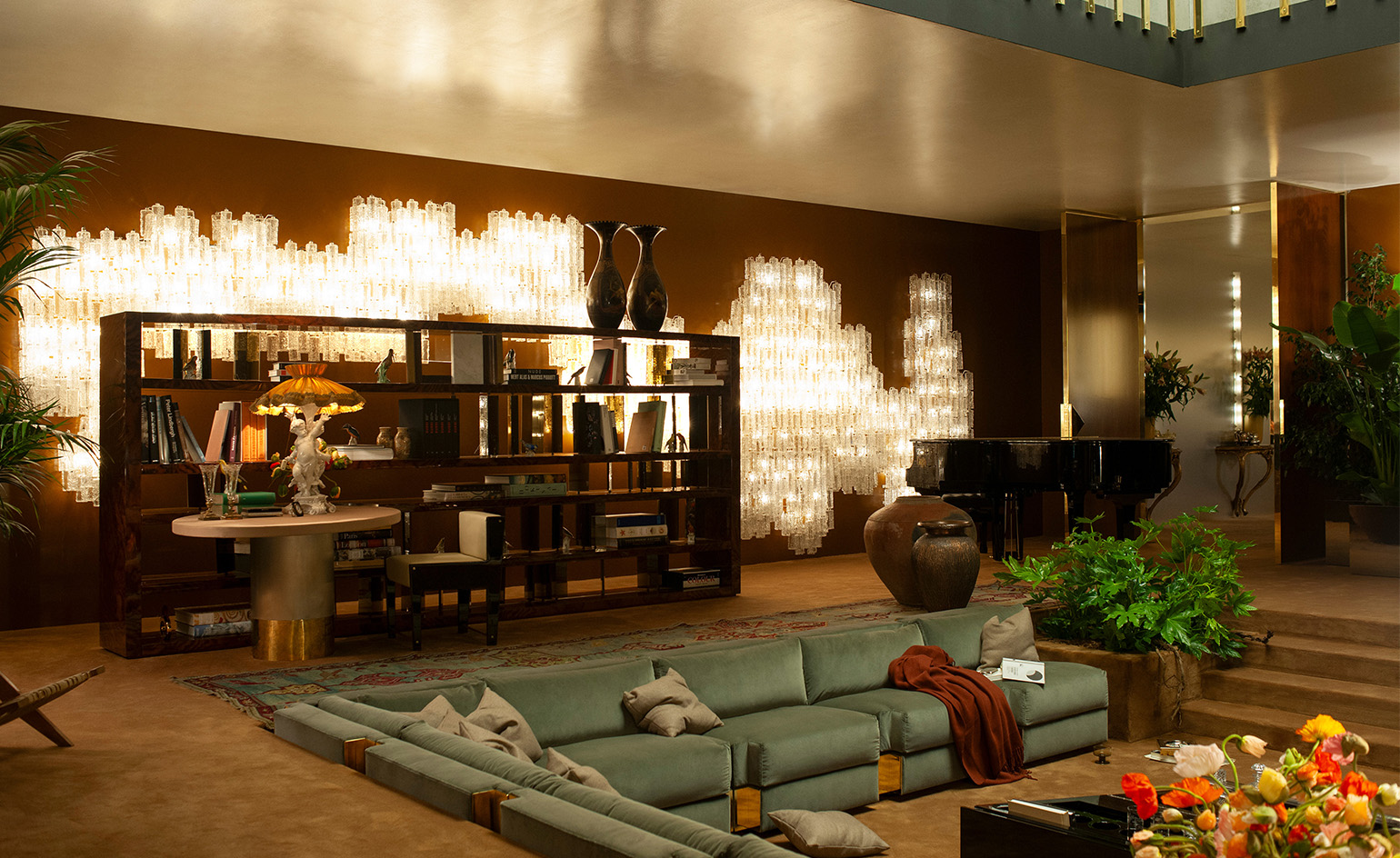 Dimoremilano and Loro Piana channel 1970s cinema in decadent Milan display
Dimoremilano and Loro Piana channel 1970s cinema in decadent Milan displayAt Milan Design Week 2025, Dimorestudio has directed and staged an immersive, film-inspired installation to present new furniture and decor for Loro Piana
By Dan Howarth
-
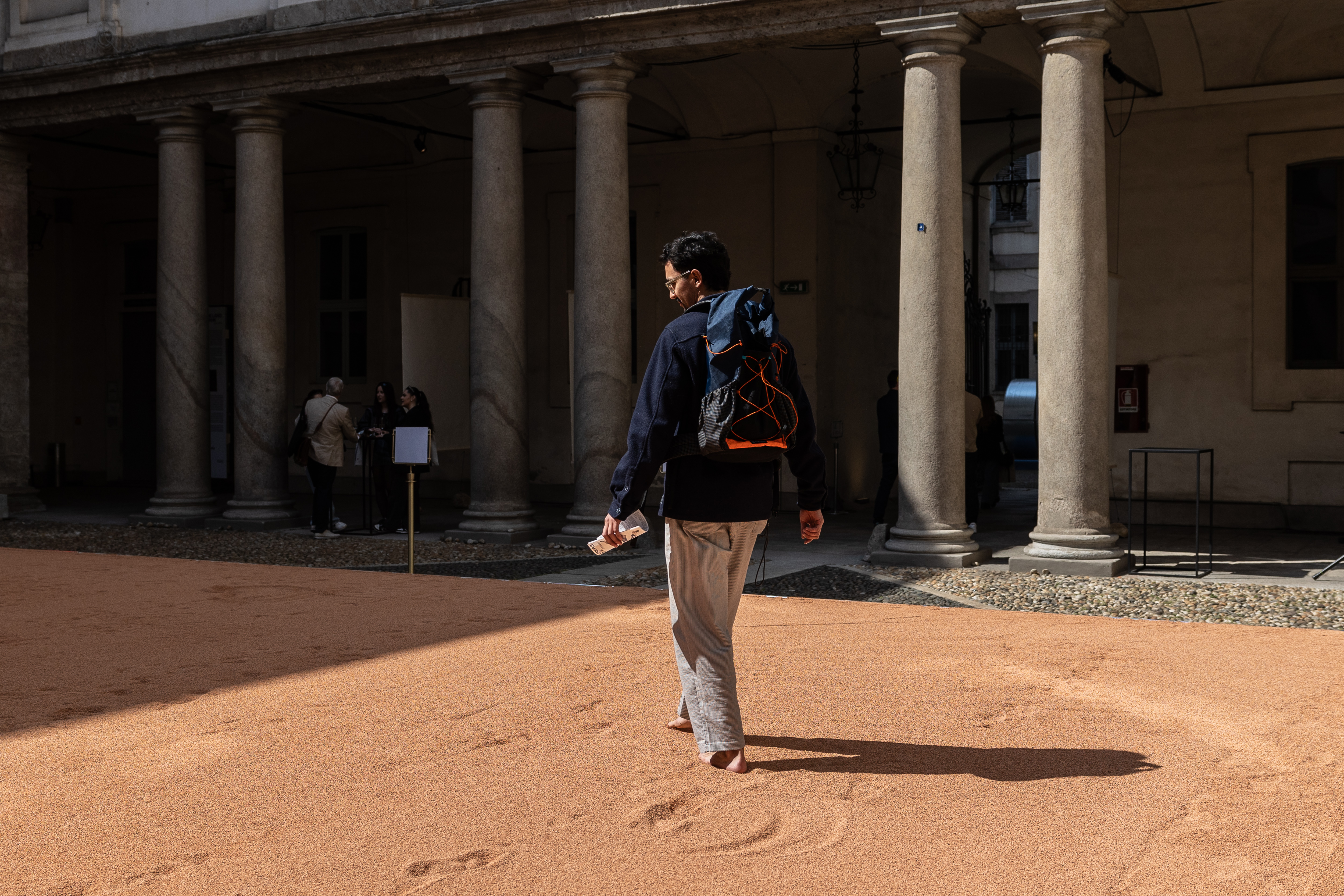 In Milan, MoscaPartners presents a poetic exploration of ‘migration’
In Milan, MoscaPartners presents a poetic exploration of ‘migration’Alongside immersive work by Byoung Cho, MoscaPartners’ Milan Design Week 2025 display features an accessible exhibition path designed for visually impaired visitors
By Cristina Kiran Piotti
-
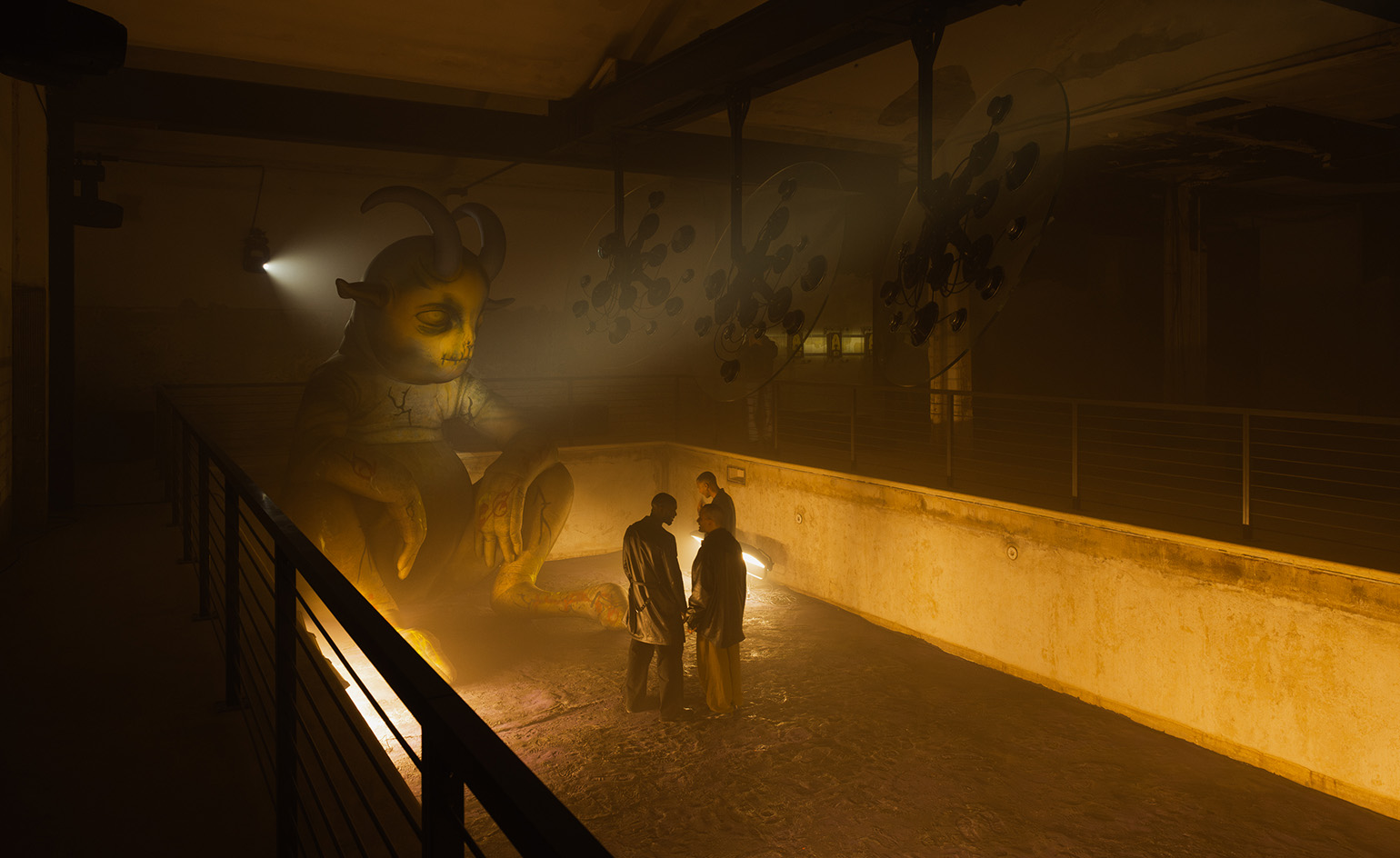 The making of PAN and Nike’s euphoric, club-inspired collaboration at Milan Design Week
The making of PAN and Nike’s euphoric, club-inspired collaboration at Milan Design WeekAlongside a new Air Max 180 release, ‘The Suspended Hour’ display sees Berlin record label PAN imagine the unfolding of a club night, from dusk until dawn
By Craig McLean
-
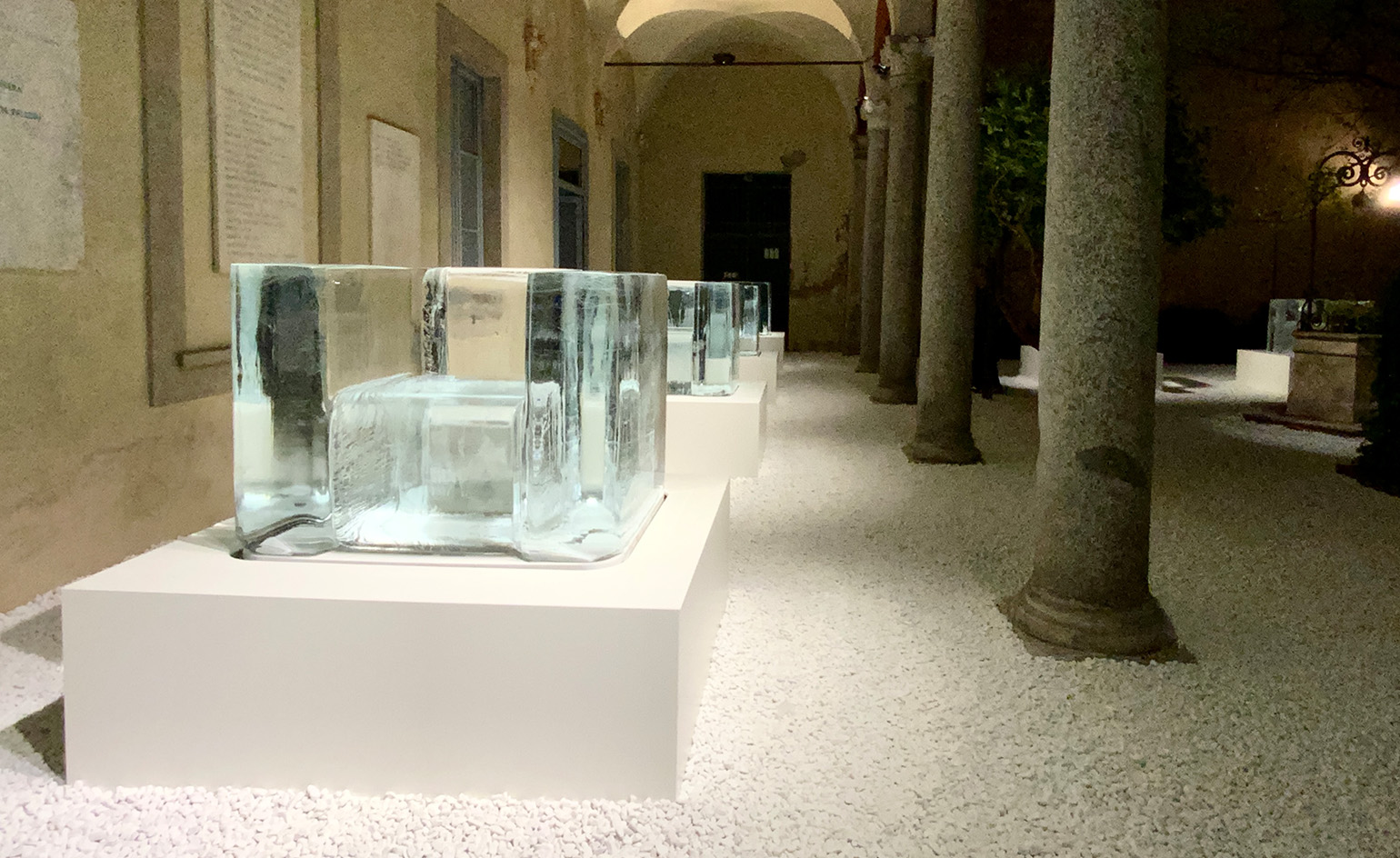 Tokujin Yoshioka’s ephemeral ice furniture is made to melt in Milan
Tokujin Yoshioka’s ephemeral ice furniture is made to melt in MilanTransparent chairs of frozen water slowly disappear during Milan Design Week 2025, in an expression of light by Japanese artist Tokujin Yoshioka
By Danielle Demetriou
-
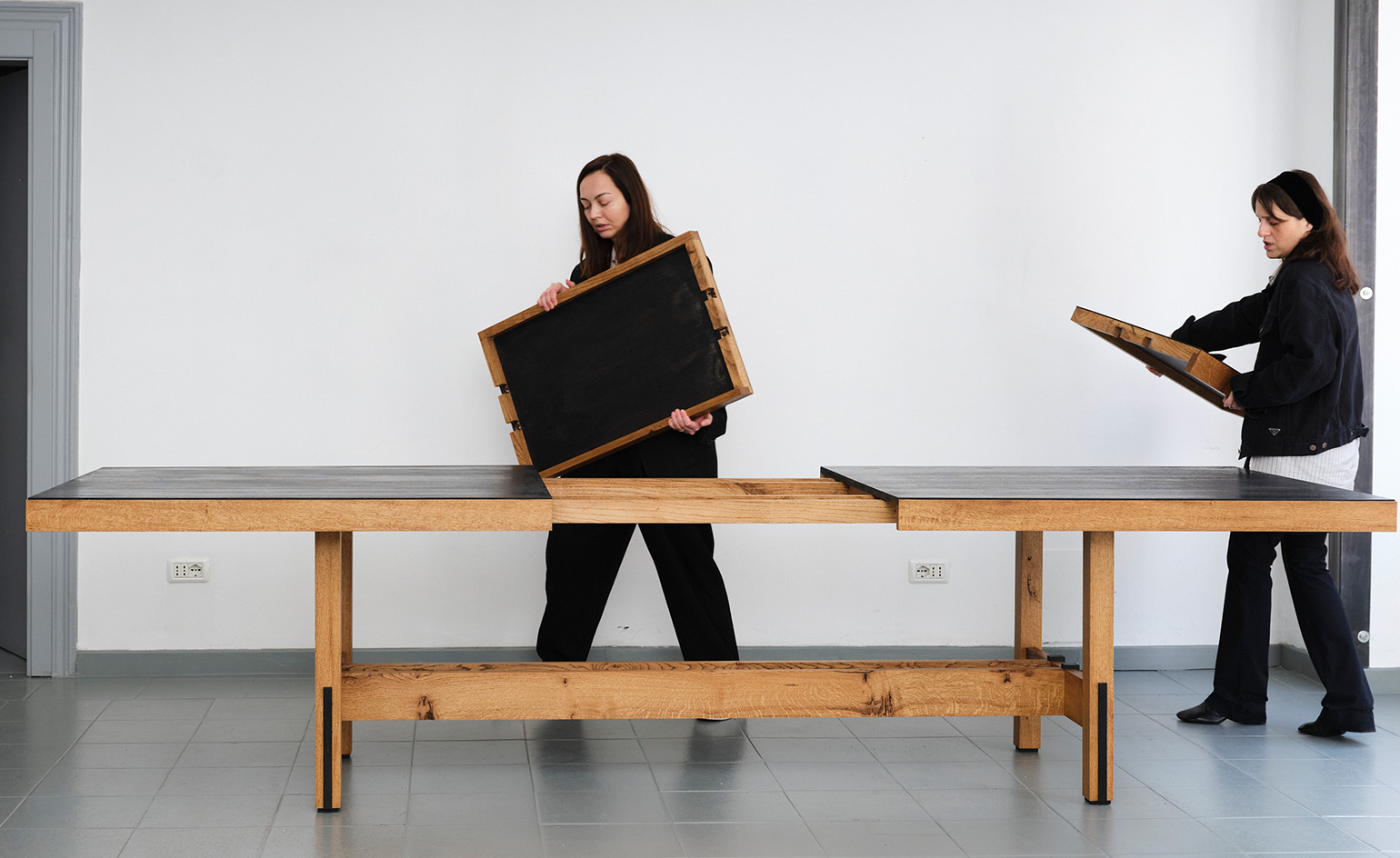 In Milan, Rooms Studio examines Georgia’s shifting social landscape
In Milan, Rooms Studio examines Georgia’s shifting social landscapeExpandable tables that reference recent government protests and lamps held together with ‘chewing gum’ feature in the Tbilisi-based studio’s Milan Design Week 2025 installation
By Dan Howarth